












Publisher
Dutch Data Center Association (DDA)

Editor in Chief
Pim Kokke
Stijn Grove
Art Director
Sam Zondervan
Marketing & PR
Zoë Derksen
Research Partner
Peter Vermeulen, Pb7 Research
Contributors
Daniëlle Arets, Laura Beukers, Michiel van Blommestein, Natascha Geraedts, Manuel Giménez, Joni Israeli, Merian Kruiger, João de Lima, Niek van der Pas, Cees-Jan Pen, Max Roest, Jan Willem van Roggen, Stroomkr8, Kees Verhoeven, Bart Wernaart, Michael Winterson
About
Datacentered is a publication of Foundation Dutch Data Center Association and occurs four times a year. No part of this publication may be reproduced and/or disclosed by print, photocopy, film or any other means without written permission from the publisher.
Supported by:
Location
Dutch Data Center Association
Laarderhoogtweg 18
1101 EA Amsterdam Zuid-Oost
The Netherlands
Advertisements
For inquiries about advertisements, please contact info@datacentered.net
Legrand Data Center Solutions, STULZ, Stroomkr8, Eversheds Sutherland, Watts, DPR Construction, Deerns, Kirby, AP, Maunt, Kelvion, Koninklijke van Twist, Volker Energy Solutions, EkkoSense, Panduit, Kenter, Eaton, Weiss Technik, Paroc Panel System, Rittal, Moy, Supermicro, Trescal, Arcadis, Beveco, Chatsworth Products, Exagate, Workrate, R&M Europe, ABB, Mitsubishi Electric, NL-ix, Data Ports Groningen, Heijmans, Blygold., Huawei, TSL, Kohler, Elmon-Intertech, DC Pro, FNT, CBRE, Vertiv, Socomec, Royal HaskoningDHV, MarshMcLennan, 7Digits, Forehand, Coolgradient, Fluor, Alara-Lukagro, Aksa Power Generation, Rentaload, ACT Connectivity Solutions, CANS, Zwart Techniek, Dcongreen, TA Control Systems, Arup, Croonwolter&dros, Rahi Systems, Aggrekko, Georg Fischer AG, Black Box, DGMR, Turner & Townsend, Viking, Rolls Royce, Schneider Electric, RWL Advanced Solutions, SADC, FujiFilm, Schleifenbauer, Spie, First-Case, Vattenfall, KWS Infra, Unica Datacenters, Securitas, Maxicom, ATS Global, Hug Engineering, Sims Lifecycle Services, Commscope, Mace, Red Bear Tech, Danfoss, Submer, Soben, Juniper Networks, DC People, Novenco, Worldwide Services, Park Place Technologies, Johnson Controls, TÜVIT, Honeywell, Zentrys, Secior, Grundfos, Elinex, Equans, Pathema, APAC, Salute Mission Critical, All Rack, ATC, CSB Energy Solutions, Delta Electronics



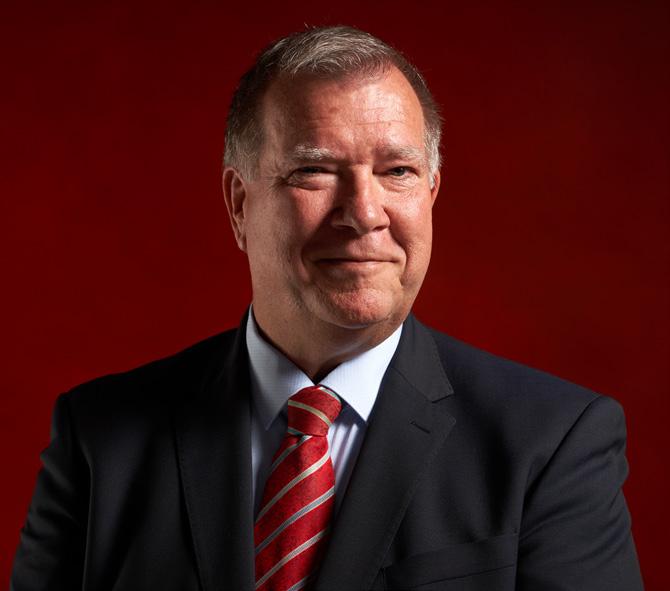





In this world of information overload it is a real challenge to filter out the relevant information. Day to day news does not provide the insights needed by industry leaders to strategize future plans. It’s with that in mind we initiated our Kickstart Conference now 6 years ago. To create a network event where trends and insights are given by and for industry leaders. It has grown to become - the key event - in Europe. And now, we are taking the next step in our journey. Today, we are introducing Datacentered: a quarterly magazine that features analyses, research, interviews, news and insights about our data center industry in Europe.
Just with all the initiatives of the Dutch Data Center Association (e.g. Kickstart Europe Conference, Datacenterplatform and reports), we are always striving for quality in a fashionable way. During the first brainstorms, we discussed which magazines Stijn Grove and did were discussing esthetics. In these sessions, we looked at magazines that were not focused on data centers and IT. Instead, our inspiration came from highly esthetic fashion, design and architecture magazine. The question remained: how can we create an appealing magazine that has the look and feel of a fashion magazine, but features all the information that we want to present to data center industry leaders?
Pim Kokke Editor-In-Chief
In order to do this, we contacted our community and decided that we want to feature industry experts across Europe to share their expertise and vision about investments, legislation, sustainability and tech. We are very proud that you are now able to expand your knowledge by reading the articles from our contributors. For example, Michael Winterson (Chairman of the European Data Center Association) explains why the broad level of national and regional regulations will truly be a game changer for the upcoming years and how the digital transformation has the power to be disruptive.
Furthermore, the first issue features interviews with Emmanuel Becker (President of the Italian Data Center Association) about the Italian market and Vincent in ‘t Veld
(Managing Director of Digital Realty Netherlands) who talks about his first 100 days as managing director. Moreover, we present the latest insights and trends from the Southern European Market and the longread ‘The Future of Data Centers in Europe’ discusses the sustainability public relation (PR) challenges of the data center industry.
With Datacentered, you have a magazine that is a need and nice-to-have, which you can read inside and outside the office. Additionally, we challenge the boundaries of creating a magazine that will become the main reference for the data center industry.
Thank you for your support.

The Kickstart Europe Conference in Amsterdam has become one of the largest strategy and networking events in the digital industry. Industry leaders and professionals from over 30 countries come together to share the latest trends and developments about data centers, cloud and connectivity. This year, a lot of attention was place on investment strategies and challenges in the EU-regions.
WRITTEN BY PIM KOKKEThe increasing inflation rates in Europe has created tensions in society and all industries. To challenge the rising prices, the European Central Bank (ECB) has increased the interest rates multiple times since the Russian invasion of Ukraine. The developments and the subsequent increase in energy prices have led to more concerns on how to become more sustainable. At the most recent edition of the Kickstart Europe Conference in February, visitors discussed what steps the digital industry needs to take in order to become more sustainable while still achieving business goals.
Various panel sessions at the Kickstart Europe Conference discussed the opportunities of re-using the energy of data centers and the re-use of water. In the session ‘Guide to Sustainable Data Centers’, the main topic was how data centers and suppliers can achieve certain sustainability goals from a product and solution point-of-view. For example ten years ago, we saw around 10 to 15 zettabytes of data in the world Today, we are seeing around 100 to 110 zettabytes of data in the world. So we see a sharp increase in data that’s only going to continue.

However, the energy and water use of data centers remained stable in the last ten years in which you could say that data centers and suppliers took their responsibility in becoming sustainable. We realize that we’re at the center of a community and quite some priorities around being sustainable and take that responsibility got very serious.
As mentioned, the industry has taken large steps to be energy efficient. Daniel Turk, Solution Portfolio Manager for Data Centers at ABB, was also one of the panel members and elaborates on how everyone in the industry is taking their responsibility. “Everybody has a mobile phone and uses streaming services. The amount of data has increased so much, but the usage of electricity has not increased that much. However, there are always things to do as well. If we look from the side of ABB, we have good and efficient motors for cooling. A more efficient uninterruptible power supply (UPS) or better cooling switchgear can improve your energy efficiency.
The first step, however, is to set a target for your organization. For example, the science-based goals from
the Paris Agreement about the climate could function as a reference for your own business. “At Legrand, we are very committed to our developed Corporate Social Responsibility (CSR) roadmap that we launched in March 2022 and will last up to 2024 in which we want to complete our goals. We have 15 targets, divided in four areas that we want to have completed next year. For example, we want to reduce our CO2 emissions within scope 1 and 2 by 10% each year through energy efficiency improvements at our manufacturing sites and renewable energy deployment. Furthermore, we want to eliminate 100% of single-use plastic in flow packs and expanded polystyrene packaging”, says Ralf Ploenes (Vice President of Legrand Data Center Solutions Europe).

Moreover, we see an increase in demand for hardware and renewal of IT hardware but in the end we want to keep the life cycle of these products as long as possible. This contradiction sparks the discussion on how to cope with this fact. Jelle Slenters, commercial director at Sims Lifecycle Services, explains:

DESPITE THE HIGHER CONSTRUCTION COST AND INTEREST RATES, WE STILL SEE A HEALTHY ENVIRONMENT WHERE THERE IS ENOUGH CAPITAL AND FINANCING AVAILABLE.
It is easy to recover material by just moving it on to the secondary market and taking back the residual value. I think that we as an industry should do a little bit more. For example, when we get a server in, maybe we should prepare it for liquid cooling. There are some parts and components that we can buy and, in this way, upgrade those machines up to a certain standard. However, we need demand for these solutions. If you look at the automotive industry, somebody needs to buy that three or four year old Audi. Therefore, think we need to enhance the product before it goes onto the market by, for example, extend the life cycle or expand the warranty upgrades.”
In the Investment Outlook panel, the topic focused on the capital availability within the industry. Timo Buijs, Director Project & Infrastructure Finance at the Dutch bank ABN AMRO, explains that this year growth will still be substantial. “From the banking side, there is still a demand for financing data centers. We do believe that in a couple of years, just like in the United States, other sources or at least debt funding will come to the market and will serve as an important alternative form of investing in data center projects in Europe. Furthermore, there is still a healthy growth and demand from enterprise hyperscalers which drives the prices up. Despite the higher construction cost and interest rates, we still see a healthy environment where there is enough capital and financing available.” The latter is also what Konstantin Hartmann, Vice President Sales & Commercial at NTT Global Data Centers EMEA, sees. “There will be a large portion of organic growth in existing markets. At NTT, we have a strong basis in Frankfurt and London but also in other markets. We will come into, I would say, a decade in the next few years where we will see a lot of deliveries going on. And think this is going to shake off a little bit the Merger & Acquisition (M&A) activities in the market as well, because it’s going to be exciting to see how all these commitments, specifically the pre-leased commitments that many providers have done, are going to be delivered. These M&A activities will also be focused on certain markets in order to get knowledge about these markets.”

Many National Trade Associations (NTA’s) came together at Kickstart Europe to discuss their mutual challenges. One of the most heard key-messages at the Kickstart Europe Conference was perception of data centers towards media, politics and society. The framing that data centers have a large impact on climate change has to be debunked in a way that the industry should clearly inform the public opinion about the energy usage and which initiatives are already implemented in order to achieve the global sustainability goals.

For Southern Europe, executives of the NTA’s from Spain, IItaly and France joined the panel session in which they discussed recent developments and challenges in their country. Robert Assink, co-founder of the Spanish Data Center Association, shared how the DC-market in Spain is growing. “There are a lot of new investments in the Spanish market. In 2019, there were only three international multi-tenant data center operators in Spain. Nowadays, there are already six operators and if all the announced plans come through, we expect 12 operators in the upcoming 2-3 years.”
According to Assink, a lot of investments occur in the Mediterranean area because of the Strait of Gibraltar that is connected to the subsea cables in the Atlantic Ocean, and the Suez Canal that is connected with the Pacific Ocean. “For geographical metrics, the distance between the continents in order to connect each other is shorter thus leading to lower latency and lower costs. In this way, we can create a fast Internet highway which connects three continents from Virginia (United States) to Bilbao (Spain) with connections through Barcelona, Marseille and the Pacific Ocean.”
In France, legislation and sustainability are the main topics for the industry but also the national authorities. “As an association, we have a working group on data center and cloud that addresses the circular economy, renewable energy, energy efficiency and cooling systems. We want to decarbonize our industry in which we collaborate with the public authorities. With the latter, it took time to establish a realistic dialogue with the public authorities to explain what a data center is. But now we are more well-known, which is good because regulation is growing in France. For example with sustainability, we have 2-3 new laws every year that affect data centers”, says Geraldine Camara, managing director of the France Datacenter.
The same challenges occur in Italy. Emmanuel Becker, managing director of the Italian Data Center Association (IDA). “The key challenge is to deliver enough capacity for the requests in the market as the countries in Southern Europe have become more popular in constructing new DC-locations, which also attract suppliers and cloud service providers. Furthermore, the connectivity between these countries is still a challenge as we are mainly discussing the use of subsea cables and not specifically what connectivity we can have between each other in order to connect ourselves on an interconnected global level.”
In the panel discussion about the Nordics, the members discussed the strategies and developments in their country, and the perception of data centers in the media. For example, Veijo Terho, chairman of the Finnish Data Centre Association, shared that the demand for new DC-locations in Finland are quite high. “Microsoft is building multiple data centers and Google is also further expanding their existing data centers. However, we are also dealing with bureaucracy in the way of getting permission for building new data centers despite all the green energy (e.g. wind) sources that we have.”
In Sweden, the perception of data centers and public opinion differs compared to Ireland and The Netherlands. However, there is still plenty room for improvement regarding this topic. “We really need to talk with others about the importance of our
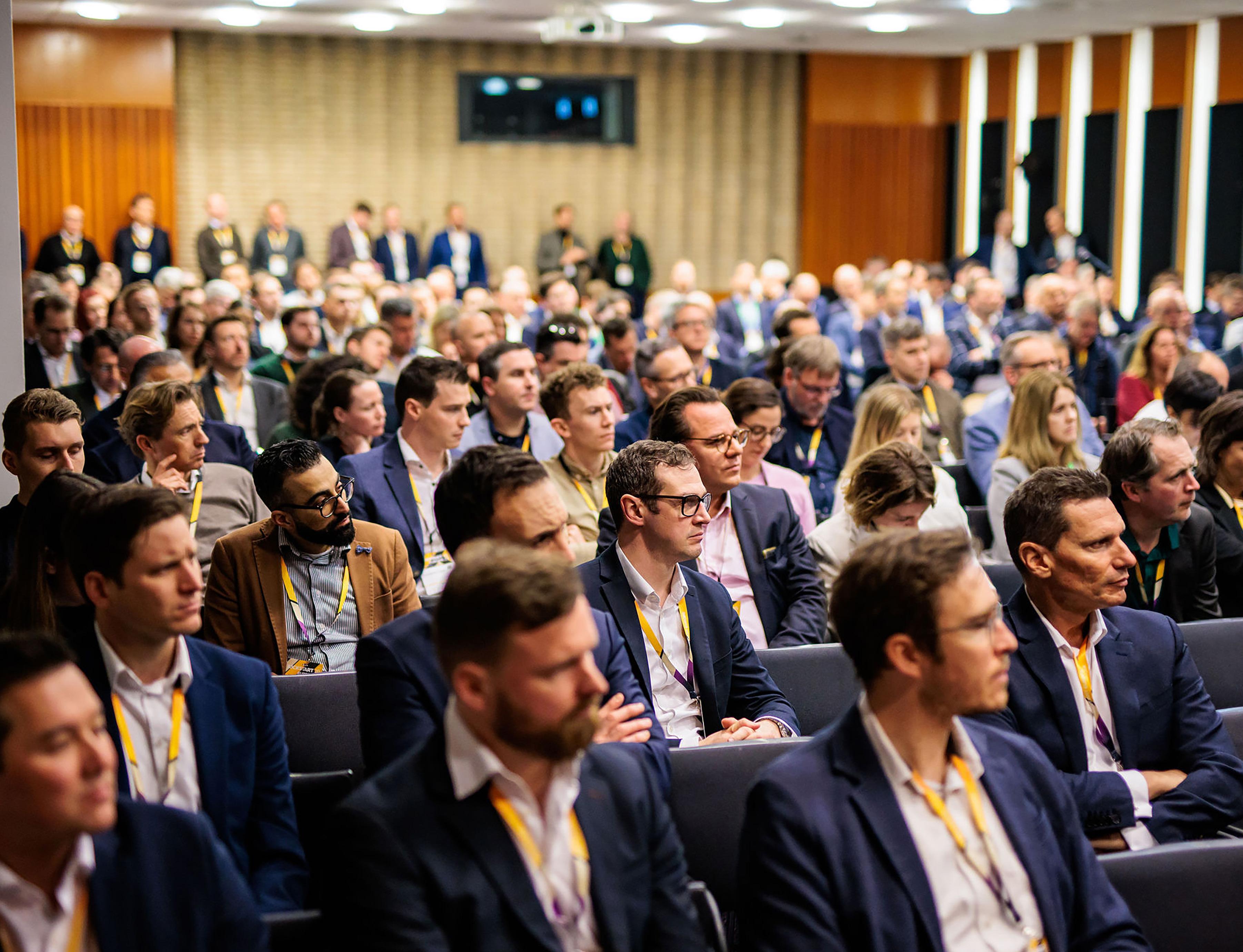
digital infrastructure, because this is an enabler for all the digital solutions that positively impacts our everyday life. Then, we can encourage younger generations to work in our industry”, explains Isabelle Kemlin, vice chairman of the Swedish Data Centre Industry Association. The perception of data centers is also a hot topic in Norway. “We see a change of perception in Norway. Previously, our country was mostly regarded as ‘too exotic’ for large investments due to the historical factors such as the lack of connectivity and the fact that Norway, because of our landscape, was not fitted for the construction industry. However, this frame has changed quite rapidly in the short term and we see that more tech companies are evaluating new projects in the country”, says Bjørn Rønning, general manager of the Norwegian Data Center Industry.
Thomas Volder, chairman of the Danish Data Center Industry, explains the current situation in Denmark. “We saw quite a positive momentum for hyperscalers by having Google, Apple, Facebook and three data centers from Microsoft. Those were big investments in our digital infrastructure. However, on the colocation side there was some growth but not at the pace of Norway. Therefore, I believe that we will see a bigger momentum on this site for the future which will go hand in hand with the further developments at the hyperscalers sites. “

But what trends are evolving in Western Europe? In the FLAPD and Belgium, there are a lot of developments that need to be addressed by the representatives.
Friso Haringsma, co-founder of the Belgian Digital Infrastructure Association (BDIA), explains what is happening in the Belgian market. “In Belgium, there is a decentralization of the data as it’s stored mainly in on-premise data centers. If you look at the size of that, it’s almost double the size of co-location. Therefore, there is a lot of potential in working with IT concentration and to have a more efficient way of handling the data.” When
addressing the regulation, Haringsma explained that Belgium is working towards the European perspective as local politicians are not prioritizing data centers. Furthermore, he explains that there are some regions in Belgium that have not invested in the future thus leading to some challenges for the grid. “Because of this, there is a lot of potential for investments to be made in order to make sure that there will be no issues on grid usage”, says Haringsma.
In Germany, there is a lot of discussion about the amount of regulations for data centers. Anna Klaft, chairwoman of the German Data Center Association, explains: “We recently got a new energy efficiency law that wants to regulate mandatory heat recovery aspects for new facilities and limitate the server temperatures. However, we think that this law does not suit our industry thus leading us to further discuss the implementation of it with politicians, decision makers and the municipal authorities.” Klaft further addresses that Berlin is expanding itself as the second DC-market in Germany because Google chose the city for building a full cloud service region. “But we also have Munich, Düsseldorf and Nuremberg where a lot of local data centers are situated”, tells Klaft.
Gary Connolly, president of Host in Ireland, shares that the industry should focus on the two biggest trends: decarbonization and digitalization. Furthermore, Connolly addresses that the power grid limits are something that needs to be taken seriously. “In Ireland, we have a 1 Gigawatt (GW) now at the moment with 600 Megawatt (MW) under development. The challenge is that you are looking to integrate 1.6 GW with a two Gigawatt funnel into a 5 Gigawatt (GW) grid. That is insane. And as data centers are just a large floppy disk, we are more interested in the data itself.”
The limits of the power grid is not the only thing that comes to mind. Stijn Grove, managing director of the Dutch Data Center Association (DDA), explains that the industry also has to address how it can grow as there is a lot of
“WE REALLY NEED TO TALK WITH OTHERS ABOUT THE IMPORTANCE OF OUR DIGITAL INFRASTRUCTURE, BECAUSE THIS IS AN ENABLER FOR ALL THE DIGITAL SOLUTIONS THAT POSITIVELY IMPACTS OUR EVERYDAY LIFE.”
ISABELLE KEMLIN, VICE CHAIRMAN OF THE SWEDISH DATA CENTRE INDUSTRY ASSOCIATION.
WE SAW QUITE A POSITIVE MOMENTUM FOR HYPERSCALERS.
shortage in various domains. “There is a shortage of people, power grids and land. Therefore, think the data center industry needs to integrate more with the grid. So we are looking into new areas where we can build substations ourselves and connect them directly to the high voltage grid. Let us use the grid connection that we also have for batteries in between, because they also have a shortage of grid connections. In this way, we can grow in an integrated way”, tells Grove.
Grove further explains that in the Netherlands data centers take a leading position in the new economy. “The new economy is open, transparent, inclusive and sustainable. And in order to build this, you need digital services and a solid infrastructure as we live in a time where we rely more on the infrastructure in our own country. Therefore, we will also change the way we build data centers in the future and the place where we build.”
The Eastern Europe market is also growing. According to the panel members, the market size will grow exponentially in the upcoming years. “Currently, there are 70 data centers and this number is still growing. For example, Vienna has more carriers, Internet exchanges


and content providers than any of the other regions in the local market. And based on that, data center market used to grow exponentially when hyperscale providers got interested in that market, not only to access the Austrian customers, but to have a point of presence in the Central East European region to reach out to the neighboring countries as well. From Vienna, you can reach five capital cities within less than five milliseconds, which is a strategic advantage, definitely if we want to reach out into the region. Furthermore, there are also a lot of regional players in the regions like Styria (upper Austria) where the
demand for data centers expands”, says Martin Madlo, president of the Austrian Data Center Association. In Poland, there are three challenges in the local market. Sławomir Koszołko, CEO at Atman, explains how energy prices, availability and Megawatt connections are the biggest challenges for the country.
“If you build more and more, you will have the problem of availability of energy and connections. For example, every operator wants to be in the same place like Warsaw. One of the solutions is to move to other cities and create some form of diversification.”
In sum, you could say that in all EU-regions the same challenges are occurring. The power grid, energy availability, the public opinion about data centers and future constructions are just a few that were mentioned during the panel discussion at the Kickstart Europe Conference. But despite these challenges, the investment climate for (new) data centers is and will be booming.
Marenostrum 4 is a supercomputer located in Barcelona’s Chapel Torre Girona and part of the Barcelona Supercomputing Center (BSC), The supercomputer has gained significant recognition as one of the most powerful and advanced supercomputers in Europe.

Installed in 2004, it has undergone several upgrades since then to maintain its cutting-edge capabilities. Furthermore, the MareNostrum consists of multiple interconnected clusters of processors and accelerators, enabling parallel processing and efficient computation.
The general-purpose block has 48 racks with 3,456 nodes. Each node has two Intel Xeon Platinum chips, each with 24 processors, amounting to a total of 165,888 processors and a main memory of 390 Terabytes.




Spain and the data center sector are living in an idyllic moment, like the beginning of a love affair where everything is perfect, everything adds up and everything fits together. Those are known as “days of wine and roses”
For the first time in its recent history, Spain caught the train of an industrial revolution and are seated in the first class wagon. It is located at one end of Europe with direct communication to Africa, America and the center of the continent. Due to a solid network of connections and an enormous development of renewable energies, Spain firmly position itself as the hub of digital communications in Southern Europe.
Large companies and major international investors have set their sights on Spain, which in the coming years will receive close to 7,000 million euros in direct investment and another 10,000 million euros in indirect investment. This growth will lead the country to comfortably exceed 600 MW of power by 2026, bringing it closer to the most mature markets in Europe. In short, Spain has gone from being very distant from the large data centers, the so-called FLAPs (Frankfurt, London, Amsterdam and Paris), to becoming one of them. We could already speak of FLAPS including the S for Spain.

The rapid growth of data usage, post-pandemic world, and the new trends in all fields (health, mobility, education, etc.) explain this unstoppable process towards digitalization, decarbonization and, therefore, sustainable development. data centers is a centerpiece of this process that is fundamental to humankind.
The expectations must give way to a mature and serene
analysis. This rapid growth is not without risks and challenges. The first of these challanges is undoubtedly sustainability. The data center sector must take a firm step towards climate neutrality and Spain is at the forefront with respect to its neighboring countries. Thanks to its strength in renewable energies and a more recent start of activity, it could be said that the data centers in our country are natively sustainable. We need to achieve full integration of the data center into the environment and society, so that we are seen as part of the solution to environmental problems, the climate crisis and the rational use of natural resources.
Talent is another great challenge facing the industry. The rise of digital transformation is causing an increase in the demand of data centers, which must be nourished by professionals with a high technological profile. Thousands of them will be needed in the coming years and despite the public-private efforts there is a shortage in the market.
Finally, the challenge of regulation. The development of the data center sector needs strong institutional support at all levels, local, regional and national. It is our responsibility to make authorities and society aware of how necessary the data center is to successfully grasp a digital, decarbonized society. Development indexes are much higher in regions where data centers are installed: job and wealth creation is much stronger where digital and green transitions are more advanced.
These challenges are the thorns on the roses I mentioned at the beginning. Thorns that need to be trimmed so that they do no harm. Spain has a great opportunity to grow and to do so without harming anyone or anything.
The concurrent need for sustainability, energy transition and cost reduction has become pervasive throughout the entire data center industry. “All the while, well-known requirements such as security and compute power have not allayed, resulting in a ‘New Normal’ for the entire market”, says Carlo Brouwer, managing director of STULZ Benelux.
 WRITTEN BY MICHIEL VAN BLOMMESTEIN
WRITTEN BY MICHIEL VAN BLOMMESTEIN
The entire world is in the midst of a transformative phase, focusing on sustainability, energy transition, and cost savings. That has numerous implications that complicate operations and design of data centers. “One of the crucial factors impacting data centers is the increasing temperatures within facilities,” Brouwer says. “Increasing the temperature by just a bit can have a significant effect on power usage. However, higher temperatures also have a significant impact on equipment such as chillers and coolers. Refrigerants are becoming increasingly critical.” Scalability is becoming a pressing concern as well. “In the past, we saw modules with a capacity of 500 kW per room. But now, 2 MW is becoming increasingly common. Another example is the power per rack, where we are often well over 10 kW, with extremes even reaching 100 kW.” It’s not easy to manage such changes, and Brouwer
concurs. “Simply increasing the airflow until you get small-scale tornadoes in your IT room is not viable. And newer techniques such as liquid cooling do work, but then the return temperature puts additional strain on the chillers. So you need to prepare for all of that.”
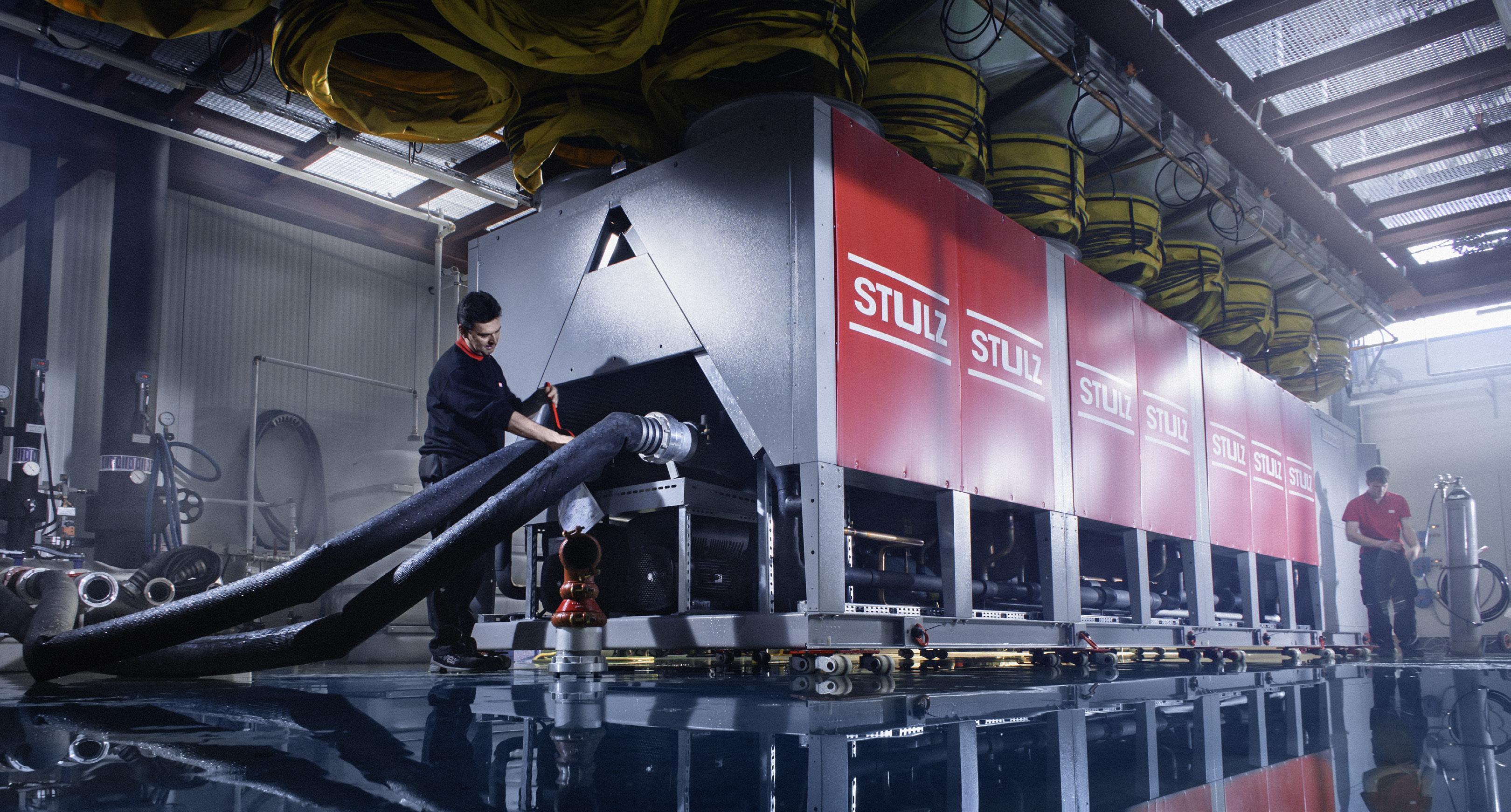
It’s these kinds of challenges that are in the ballpark of STULZ to solve. “For example, we’ve been working with Cool-IT in offering on-chip cooling,” Brouwer says. “Such techniques, as well as submersive cooling, can really help data centers tackle the high power densities we’re seeing these days.” The solutions offered by STULZ naturally also help data centers in their goals of offering heat to other objects and buildings. “Heat reuse is a challenge, as the heat is being generated 24 hours per day and 7 days per week throughout the entire year. There are not many prospective customers who need all that heat all the time. It also demands that the data center facilities are near such heated objects, which often is a break from the traditional out of the way locations where data centers have always been constructed.”
On paper at least, these challenges of the New Normal are as good as solved. But there are still areas where more discussion and research are needed, Brouwer warns. “We don’t know what to do with F-gases,” he says, mentioning refrigerant gases that while ozone friendly has an enormous global warming potential. “Sure, there is much mentioning of propane as an alternative. However, the quantities needed would be extremely high. Finding a balance between advantageous properties and regulatory compliance is essential.” Brouwer highlights the importance of open discussions among industry stakeholders, suppliers, and government bodies to collectively explore further possibilities. “We are working to create think tanks to tackle such subjects. These groups will include some of the key players in the market.”
WE ARE WORKING TO CREATE THINK TANKS TO TACKLE SUCH SUBJECTS. THESE GROUPS WILL INCLUDE SOME OF THE KEY PLAYERS IN THE MARKET
Meanwhile, the dynamic nature of the industry means that data centers have to keep delivering ever increased performance and security. Driven by innovations such as artificial intelligence (AI), the exponential growth in computing capabilities has made data centers the PCs of the modern era. “Whether you want it or not, modern society simply needs the services offered by data centers,” Brouwer says. “Many applications that are vital for healthcare for example wouldn’t exist without them. And AI will become equally important.” While some concerns around the proliferation of AI have become part of the public debate, Brouwer states it’s very important to foster acceptance through regulations.

The data center industry is undergoing a paradigm shift towards sustainability, compliance with regulations, and innovative technologies. It continues to play a vital role in supporting various sectors, collaboration, and open discussions among industry stakeholders will be crucial to navigate these changes successfully within this New Normal. “And we need to keep up”, Brouwer concludes.
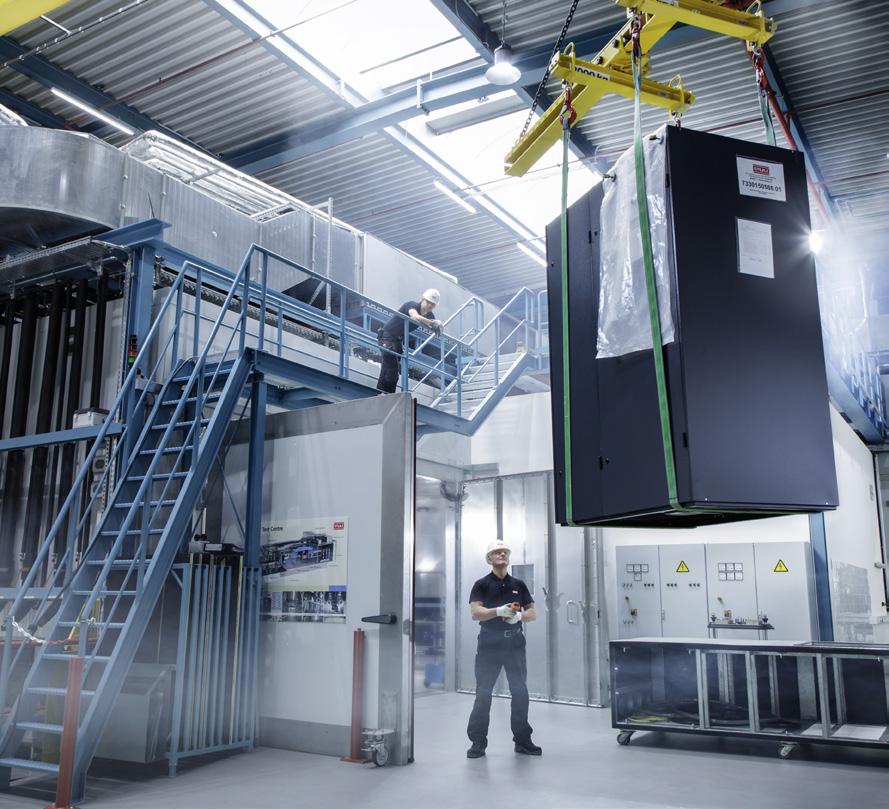
Undoubtedly, data centers have been the subject of debate in the Netherlands in recent years. While the demand for data storage increased immensely, scarcity of land, power constraints and a national nitrogen crisis have caused national and local governments to formulate stricter requirements for operating data centers.
In July 2019 the municipalities of Amsterdam and Haarlemmermeer both announced a moratorium, and the construction of new data centers within their borders was temporarily halted until local policies were set in place. On 16 February 2022, the National Minister for Housing and Spatial Planning issued a preliminary planning decision on hyperscale data centers. With the exception of two areas, hyperscale data centers were banned nationwide and stricter rules were announced for data centers larger than 10 hectares and consuming 70 MW or more of power.
Since 2020 we have seen local and regional governments starting to formulate data center policies and strategies. These documents all have a strong focus on sustainability and on spatial aspects such as integration of data centers. Designated and specific locations for data centers are embedded in zoning plans, which also contain rules on landscaping. Sustainability aspects mainly focus on energy consumption, use of sustainable energy, residual heat and water safety and water usage.
Province of North Holland in their Data Center Strategy 2022-2024, will take shape over the coming period. Developers and operators should expect additional and detailed conditions e.g. on energy savings and water usage. These conditions will become part of the permitting process for new data centers and existing data centers that want to expand.
It will be interesting to see how governmental authorities will be able to support data center operators and developers who are facing all these environmental challenges at the same time. The nitrogen crisis currently prevents any construction that adds more nitrogen into the environment – even if it concerns construction of a sustainable project such as CCS or the simple installation of solar panels. Finally, let’s not forget the new Environment and Planning Act. This Act is still expected to take effect as of 1st of January 2024. This major piece of new legislation combines laws for spatial planning, infrastructure, environment, nature and water and will have a major impact on how we deal with regulatory aspects.
These policies and strategies have in itself created a framework for data centers in addition to the applicable EU and national legal framework as set out in specific environmental legislation. We foresee that establishment conditions for data centers that were announced by the
Natascha Geraedts is a Partner at Eversheds Sutherland and part of Eversheds’ renowned Global Datacenter and Digital Infrastructure team. Natascha started her career at the Council of State and has over 20 years’ experience. Natascha is seen as the “go to expert” in the Dutch market for her knowledge in the data center sector and data center developments. Natascha frequently speaks and publishes on environmental and regulatory aspects of data centers and she has been a yearly speaker at the KickStart Europe Conference since 2021.
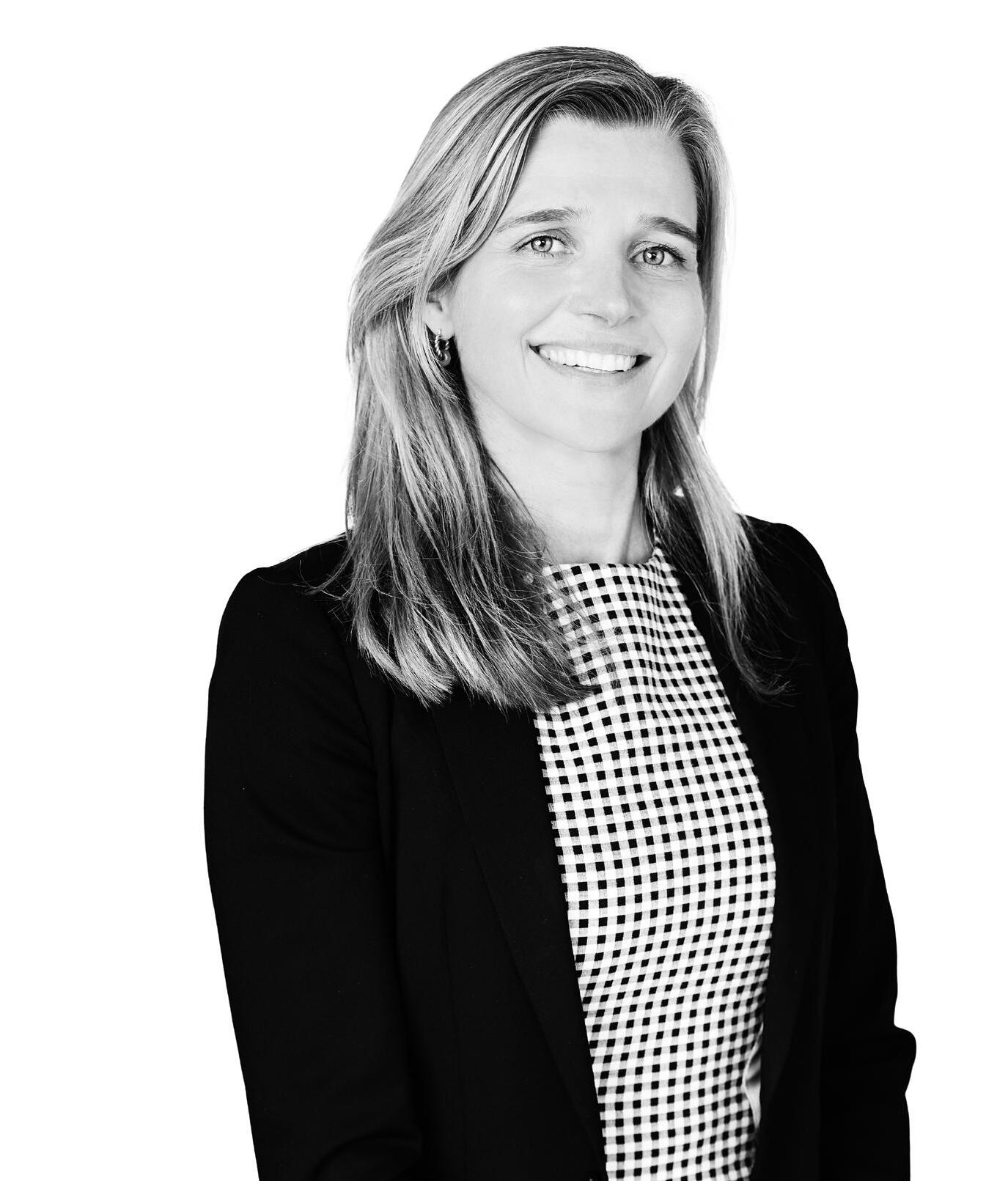
Governments and policymakers around the world have begun introducing codes and regulations for organizations to help meet ESG and sustainability goals. The European Union has introduced the Corporate Sustainability Reporting Directive (CSRD), which will require about 50,000 organizations to formally report on an annual basis starting in 2025, based on 2024 data.
FIRST OF ALL, WHAT FALLS UNDER ESG?
ESG has become a top of mind topic for management and boards especially in the last couple of years. With the introduction of CSRD, companies’ claims and commitments on ESG matters shall be put to the test once they start reporting on them.
Over 90% of studies show a positive correlation between ESG factors and financial performance.
Organizations need to quantify and address these topics with both short-term and long-term strategies to manage their risk exposures. Also, it is important to understand who the stakeholders are and what their drivers are.
ENVIRONMENTAL SOCIAL ENVIRONMENTAL
Carbon
Carbon Emissions
Product Carbon Footprint
Financing Environmental impact
Climate change vulnerability
Natural Resources
Water Stress
Biodiversity & Land use
Raw Material Sourcing
Pollution & Waste
Toxic Emissions & Waste
Packaging Material & Waste
Electronic Waste
Environmental Opportunities
Clean Tech
Green Building
Renewable Energy
Human Capital
Labor Management
Health & Safety
Human Capital Development
Supply Chain labor Standards
Product Liability
Product Safety & Quality
Chemical Safety
Financial Product Safety
Privacy & Data Security
Responsible Investment
Health & Demographic Risk
Stakeholder Opposition
Controversial Sourcing
Social Opportunities
Access to Communities
Access to Communications
Access to Finance
Access to Health Care
Opp’s in Nutrition & Health
Carbon
Carbon Emissions
Product Carbon Footprint
Financing Environmental impact
Climate change vulnerability
Natural Resources
Water Stress
Biodiversity & Land use
Raw Material Sourcing
Pollution & Waste
Toxic Emissions & Waste
Packaging Material & Waste
Electronic Waste
Environmental Opportunities
Clean Tech Green Building
Renewable Energy
Over 1,800 climate-related laws and policies are already in place globally. Over 500 sustainable finance policy instruments are in place in the largest 50 global economies.
Increased reputation translating into up to 11% higher market cap. 76% of consumers would refuse to buy a product if a company operated contrary to their beliefs. 66% of consumers are willing to pay more for sustainable brands.
1 3
Good ESG helps win the competition for talent. 55% higher employee morale. 16% higher productivity, with measurable impact on shareholder value.
2 4
Investing in .
Climate change policies
Energy efficient technologies
Carbon reduction measures
Environment preservation initiatives
Environmental loss prevention
Improved labour standards
Anti corruption and frauds controls
Privacy and data protection
Health and safety
Roles and responsibilities
ESG budgeting process
Monitoring metrics and KPIs
Reporting
E S G
Operational efficiency
Stronger market positioning
Positive reputational effect
Reduced costs of accidents and ill health
Higher employee retention
Reduced risk of internal & external frauds
Mitigated risk of fines and compensations
Align investments vs. business priorities
Improved reputation
Disclosure to relevant stakeholders
Access to cheaper financing
ESG transformations. We work with you to develop a plan and integrate it into your future ERM processes to better align risk and insurance management in terms of coverage responses and renewal information. Datacentered ESG Strategy 48

In Southern Europe, the data center market is developing rapidly. At the moment, Pb7 Research has identified a colocation data center capacity of 360 Megawatts. The majority of that capacity is spread across Spain and Italy, especially in and around Madrid and Milan. However, the Portuguese and Greek markets are actually quite sizable. And when we made a thorough inventory of all the planned data center developments for the coming five years, we were able to identify an enormous volume of 760 Megawatts in total. Obviously, there will be plans that have not been made public and escaped our eyes, especially in Greece and other countries such as Croatia and Malta. And on the other hand, there are some plans that are quite speculative. However, it is clear that the data center industry is booming in Southern Europe.
The growth is the result of a number of complementary trends. The key driver is the demand from hyperscale cloud providers, such as AWS, Google, Microsoft, and Oracle. In Europe, also in the south, they use a fairly even mix of colocation (wholesale and built-to-suit) and self-built data centers. Further, Southern Europe has developed into a major intercontinental connectivity hub. It has become a crossroads of major sea cables from the Americas, Africa, the Middle East and Asia. In the meantime, Southern European governments are very eager to attract data centers and other international digital investments. Finally we also see that digital transformation is being embraced at a high speed, resulting in growing local demand for professional data center housing.

Southern Europe: Pb7 Research is using the United Nations definition of Southern Europe. That means we include Albania, Andorra, Bosnia and Herzegovina, Croatia, Gibraltar, Greece, Italy, Kosovo, Malta, Montenegro, North Macedonia, Portugal, San Marino, Serbia, Slovenia, Spain, and Vatican City. The region is responsible for 18% of the European GDP, and within the region, 81% of the GDP is produced in Spain and Italy. In 2022, most countries in the region outperformed the EU growth rate. Italy performed only just above average, but countries such as Spain, Portugal, Greece and a number of smaller countries showed GDP growth of more than 5%.
During the past five years, countries such as Spain, Portugal, Italy, and Greece have shown signs of economic improvement. These nations have implemented structural reforms, pursued fiscal consolidation measures, and attracted foreign investments, contributing to increased economic activity. At the moment, the region is host to just 8% of all European colocation data centers in terms of IT power (MW). While governments in the North West of Europe are putting brakes in place for major data center investments, the South of Europe is still very much actively attracting new investments.
Across the South of Europe, we see a lot of announcements that are directly related to investments by hyperscale cloud providers. When these providers first settled in Europe, in the first half of the 2010’s, they focused their investments in the Nordics and the North West of Europe. The Nordics were attractive due to a combination of widely available low cost renewable power, plenty of space and a cool climate. The North West was important as it provided all connectivity requirements and closeness to a large number of consumers and business centers.
In more recent years, hyperscalers have moved from a centralized approach to a mixed approach, where they move closer to the edge. Some activities will remain concentrated, but they started to roll out data centers – self-built and rented - to new locations, distributed across Europe. With these new data centers come new ‘local zones’ where data can be stored and processed. There is a clear customer demand for more local zones by customers, in order to boost performance (reduce latency) and to achieve data sovereignty and compliance. Hyperscalers have achieved the scale that they can afford to do this cost-effectively.
At the same time, building and operating data centers in the FLAP-D markets (Frankfurt, London, Amsterdam, Paris, Dublin) are becoming complex due to shortages in grid power and space. As a result, hyperscalers are more open to exploring alternative locations. Many Southern European governments are rolling out the red carpet for these investments and they have a lot to offer. For example, Southern Europe holds great opportunities for carbon free energy production based on solar energy.
The countries in the North West of Europe on average have about 1500 hours of sunshine, the UK and Ireland even less. But in the South of Europe, countries on average have about 2800 hours of sunshine that are also more evenly spread across the calendar.
Furthermore, we see that the difference in required cooling power between the North and South has declined rapidly and will likely decline even further. Free air cooling is realistic for most of the year. As a result, PUE’s even below 1.2 are feasible and are increasingly being achieved. This has leveled the playing field in Europe significantly. With the anticipated string growth in the adoption of liquid cooling, the differences will decline even further before we hit 2030. With the growth of very large data centers, the demand for water will also grow, a resource that is increasingly scarce in the North and South. We already see data centers being creative, for example by storing rainwater in big tanks. However, governments will also have a role in establishing rules and guidelines for water usage.
In sum, hyperscale cloud providers are investing heavily and are responsible for probably 80% of all new data center demand in Southern Europe in the coming five to ten years. They are renting large buildings and entire data centers in and around the key metropolitan areas. As a result, not only the traditional data center cities (Madrid and Milan) benefit, but also cities such as Barcelona, Athens and Rome. In addition, they build hyperscale data centers at strategic locations, for example where intercontinental sea cables come ashore. As a result, opportunities emerge in locations such as Portugal (Sines) and the North-West of Spain (Galicia).
The FLAP-D markets biggest raison-d’être is acting as the digital gateway between the United States and Western Europe. Historically, that’s where the first transatlantic cables landed and the transatlantic internet interactions emerged. While the Northwest of Europe continues to be a major economic and digital key market, we are seeing strong economic developments in other European regions as well, including Southern Europe. More importantly, the global connectivity map has changed significantly over the last ten years. Portugal is a major landing point for submarine cables to and from Asia, Africa and South America. And in the North West of Spain there are multiple landing points connecting Spain to North America.
A lot has also been written about Marseille in the south of France as a connectivity hub with great connectivity to the East. But also the South of Spain, Crete, Italy (Sicily in particular) and Cyprus are well connected to submarine cables to and from the Far and Middle East. This provides a lot of opportunities for international colocation and makes the South of Europe attractive for new hyperscale campuses.

Governments focus on attracting international investments
Governments in most parts of Southern Europe are very welcoming to data center investments. They perceive data centers as a crucial part of the digital infrastructure that is required to build a modern economy. Furthermore, data centers offer a lot of job opportunities during the construction of new locations and when these locations are operational. To support this ambition, they are welcoming big connectivity initiatives, resulting in a strong
increase in subsea cable landing points. Moreover, they invest strongly in the digital infrastructure on land to consumers and businesses, and the end users in order to drive the local digital agenda. For example, broadband penetration is still relatively low in Spain and Italy, but Greece and Portugal are keeping up very well compared to FLAP-D countries. And when we look at the role of fiber, Spain and Portugal are very much at the forefront. Italy however, still has its work cut out.
Source: OECD, Broadband Portal, http://www.oecd.org/digital/broadband/broadband-statistics/
In general, Southern European governments are quite active in investigating digital usage to create new economic opportunities. They may have a reputation of being somewhat difficult to work with, with a lot of red tape and many delays as a result. But at the same time they have a very positive mindset towards (foreign) digital investments and the digital agenda in general. We also see private/public partnerships being put in place to get new projects off the ground. And in some of the smaller Southern European countries with small data center sectors, we also see central governments discussing directly and very actively with big technology vendors for new projects.
The improving digital infrastructure delivers a lot of opportunities for building out the digital economy in these countries. Better connectivity results in a better end-user experience and therefore more digital consumption by consumers. It also means that cloud services are easier to use, bringing a vast range of on demand digital services and solutions to enterprises and SMEs alike. With access to the cloud and great connectivity, businesses can invest in new business models, from online sales to all kinds of new digital
• RAI announced an edge data center network, comprising of 18 edge data centers (3.4MW), supplemented by Milan (4MW) and Rome (40MW) data center
• The Municipality of Arcene is talking with Vitali to develop an 18 ha data center campus
• Aruba launches two new data centers in Lombardy, offering 17 MW or power
services and customer experiences. They can attract new customer bases that used to be out of reach and provide new services to existing customers.
Digital technology is moving very fast. At the moment we are all looking at generative Artificial Intelligence (AI) as a not yet completely mature solution that is already disrupting areas such as online search. This may seem small, but it can potentially shake up the entire Big Tech landscape. Generative AI is expected to grow very rapidly and will require an enormous amount of data center capacity. Moreover, Generative AI is only a subset of the overall AI opportunity and AI itself is only a part of the big technology changes that provide big business opportunities. For example, we also need to consider the rise of smart appliances ranging from light bulbs to cars, and from drones to smart farming.
The south of Europe is better positioned than ever before to benefit from these technological advances. Governments and businesses will embrace it as consumers will demand it. These new digital products and services desperately need a robust and reliable infrastructure. The networks are in place or put in place and many companies will face make-or-buy decisions in terms of their data center. Many will decide to move it entirely to the cloud and even more organizations will move to a combination of cloud infrastructure and on-premises infrastructure. Cloud infrastructure requires a lot of data center space and organizations need to figure out if they can build and run robust, efficient data centers themselves, or if they should leave that to the professional. So far, this retail colocation opportunity has hardly been touched so get ready for it.
• Stack opens the MIL02 data center (10MW) near Milan, bringing the total capacity to 50MW
• Aruba opens Hyper Cloud Data Center (IT4) in Rome, start of five 6MW data centers
• Plans to turn former waste management plant in Tuscany into a 20MW data center
• Panatoni launches plan for 42MW data center in Catalonia, 20 kilometers from Barcelona
• Ingonestica is partnering with Impulsa Galicia for a 15MW carbon neutral data center
• Ingonestica is building a 150 MW data center in Cáceras (Extremadura region)
• Merlin properties started construction on the Arasur data center in Vitoria (south of Bilbao), with 70 MW in two phases.
• Nethits Telecom plans 20 MW data center in Valencia
• Start Campus started building first 15MW facility on the new Sines data center campus, plans to scale up to 135 MW and eventually grow into a 495MW campus by 2030.
GENERATIVE AI IS EXPECTED TO GROW VERY RAPIDLY AND WILL REQUIRE AN ENORMOUS AMOUNT OF DATA CENTER CAPACITY.
Most Connected
$1.281 TRILLION
DATACENTERS
GDP DESI INDEX
81
Digital Realty Spain
• Interxion Madrid (MAD1) (182)
• Interxion Madrid (MAD2) (182)
Equinix Spain (53)
• Equinix MD2 (53)
• Equinix BA1 (52)
ESpanix Datacenter (27)
Largest Sites
APTE Spain
• Telefonica Barcelona 1-3
TATA Group Spain
• Tata Madrid
Malaga Data Center Spain
• Malaga Data Center
#7
INTERNATIONAL TAX
COMPETITIVENESS INDEX
#34
Data4 Group Spain
• Data4 Espagne
Orange Spain
• Orange Santander
Most Locations
• Equinix Spain (4)
• Digital Realty Spain (3)
• ADAM (3)
• ADAM Spain (3)
• EXA INFRASTRUCTURE SPAIN (3)
AMOUNT OF IX-MEMBERS
194
Most Connected
MIX S.R.L. Italy (175)
• MIX Caldera
CDLAN S.R.L. Italy (35)
• CDLAN Caldera21
Data4 Luxembourg S.A.R.L. Italy (28)
• Data4 Italy Datacenter Campus
Equinix, Inc. Italy (28)
• Equinix ML2 - Milan, Cascia
Seeweb S.R.L. Italy (26)
DATACENTERS
GDP DESI INDEX
138
• Seeweb Milano Caldera
Largest Sites
DEV Italia Datacenter Pisa Italy
• DEV Italia DataCenter Pisa
Planetel SPA Italy
#18
INTERNATIONAL TAX COMPETITIVENESS INDEX
#37
• Planetel Treviolo
Universitá Degli Studi Di Padova Italy
• VSIX DC
Retelit Group Italy
• Retelit Modera
AtlasEdge Data Centres Italy
• AtlasEdge DC Milan
Most Locations
• Retelit Group (30)
• Centerserv Italy (12)
• Interoute/GTT Italy (7)
• Stack EMEA (7)
AMOUNT OF IX-MEMBERS
383
GDP DESI INDEX
DATACENTERS
INTERNATIONAL TAX
COMPETITIVENESS INDEX
Most Connected
Equinix Portugal (48)
• Equinix LS1
Fundação para a Ciência e a Tecnologia, I.P. Portugal (7)
• FCCN Lisbon - SE06
Fundação para a Ciência e a Tecnologia, I.P. Portugal (7)
• FCCN Lisbon - SE03
ONI Telecom Portugal (6)
• ONI Telecom Lisbon Matinha
Dotsi Portugal (3)
• Dotsi Lisbon DC1
Largest Sites
Tata Communications Portugal
• Tata Communications Seixal
AR Telecom Portugal
• AR Telecom Porto
Fundação para a Ciência e a Tecnologia, I.P.
• FCCN Lisbon - SE03
Equinix Portugal
• Equinix LS1
Claranet Portugal
• Claranet Porto
Most Locations
• Fundação para a Ciência e a Tecnologia, I.P. (4)
• AR Telecom Portugal (3)
• Webtuga (3)
AMOUNT OF IX-MEMBERS
54
Most Connected
Ziemer Group AG
• SIS Ltd Malta Data Centre
University of Malta
• Malta University Data Centre
BMIT Technologies PLC
• BMIT Qormi
CSL Data Centre Services Ltd
• CSL Data Centre
• Melita
• Melita Data Centre
Most Locations
• BMIT Technologies PLC (2)
• CSL Data Centre Services Ltd (1)
• Melita (1)
• GO PIC (1)
• University of Malta (1)
GDP DATACENTERS
$22.8 BILLION 12
Most Connected DEFI Andorra
• DEFI Data Center
MYP Proveidor Serveis Internet
• Myp Andorra Data Center Andorra Telecom
• Comella Data Center Andorra Telecom
Most Locations
• DEFI Andorra
• MYP Proveidor Serveis Internet
• Andorra Telecom
GDP DATACENTERS
Most Connected
Gibraltar Savings Bank
• Rockolo Limited World Trade Center
• Gibtelecom Data Center
Continent 8 Technologies
• Continent 8 DC
Sapphire Networks
• Sapphire Networks Data Center
Most Locations
• Gibraltar Savings Bank (2)
• Sapphire Networks (1)
• Continent 8 Technologies (1)
GDP DATACENTERS
$3.2 BILLION 4
Most Connected Semplify
• Semplify DC
Most Locations
• Semplify
SAN MARINO $2.09 BILLION
GDP DATACENTERS

Amsterdam has plenty of cloud cover, and for once, it is not related to the weather. In fact, the FLAP (Frankfurt, London, Amsterdam, and Paris) data center market is expected to grow at a CAGR of 3% until 2027; and Dublin is likely to experience similar figures. With that in mind, as a banker, cannot help but consider the impact of the increasing interest rates on data centers’ financing. Will the financing of new data center projects come to a temporary halt?
On one hand, the European Central Bank has increased the interest rate by a total of 175 bps, since December 2022. On the other hand, the demand for data centers remains high, powered by the increasingly data-hungry economy. Some of its drivers are among the most trending topics of the year, such as the rise of artificial intelligence, the use of video content, automation, edge computing, and augmented reality.
The amount of new data created and consumed has grown exponentially in the last two decades. To put things into perspective, Statista expects the amount of new data to grow to 181 zettabytes in 2025. That is more than all the produced data over the 2010-2019 period!
However, something to stay vigilant about is the sustainability and regulatory aspects around data centers, and their role in society. An example is the EU Code of Conduct for Data Centers that provides recommendations supporting the European Energy Efficiency Directive (EED).
The impact of interest rates on the development of data centers should not be keeping anyone awake at night. Of course, being a debt-loaded sector, it is natural for rising interest rates to have an impact; especially on the timing and structure of financing. However, it is unlikely to materialize in reduced growth for the sector. The strong fundamentals driven by contracted revenues from hyperscalers and the wholesale collocation of data centers as a service, make data centers a resilient business. Right now, there is a good opportunity for data center groups to reevaluate the strategy going forward, and improve their credit profile. Furthermore, the development of new data centers will have an increased dependency on how these fit and relate to their community. Once the inflation and monetary policy allow for more visibility, it will be worth taking a deep dive into the environmental, social, and regulatory factors that present a challenge to the data center sector.
Jan Willem van Roggen is a seasoned banker who has a successful career in the financial services industry. With over three decades of experience in banking, Jan Willem is currently heading the Commercial Real Estate and Infrastructure teams at NIBC, which operate extensively across Europe. His teams possess extensive knowledge of the latest market trends and financing opportunities, allowing them to offer valuable insights and solutions to clients.
Last march, various professionals from the European data center industry came to Milan for the launch of the Italian Data Center Association (IDA). With the installation of a new National Trade Association (NTA), the European data center industry takes a big step in further professionalizing the relationships with local and national governments. Emmanuel Becker, President of IDA, talks about the first months of IDA, recent developments and challenges in the Italian market.
WRITTEN BY PIM KOKKEThe past months have been quite busy for Emmanuel Becker, President of the Italian Data Center Association (IDA) and managing director of Equinix in Italy. It was in the Fall of 2022 when Becker met his colleagues from the industry. During this meeting, the question came up as to why there was no National Trade Association (NTA) representing the Italian data center industry. “This became the starting point and we came together with the founding parties (Microsoft, Equinix, Rai Way, Data4, STACK Infrastructure, Digital
Realty, Vantage Data Centers and CBRE Data Centers) and founded the association last December. At this moment, we have already over 65 members. Therefore, am very proud that we have already reached this number in a short term as it means that there was a strong interest for an association”, tells Becker.


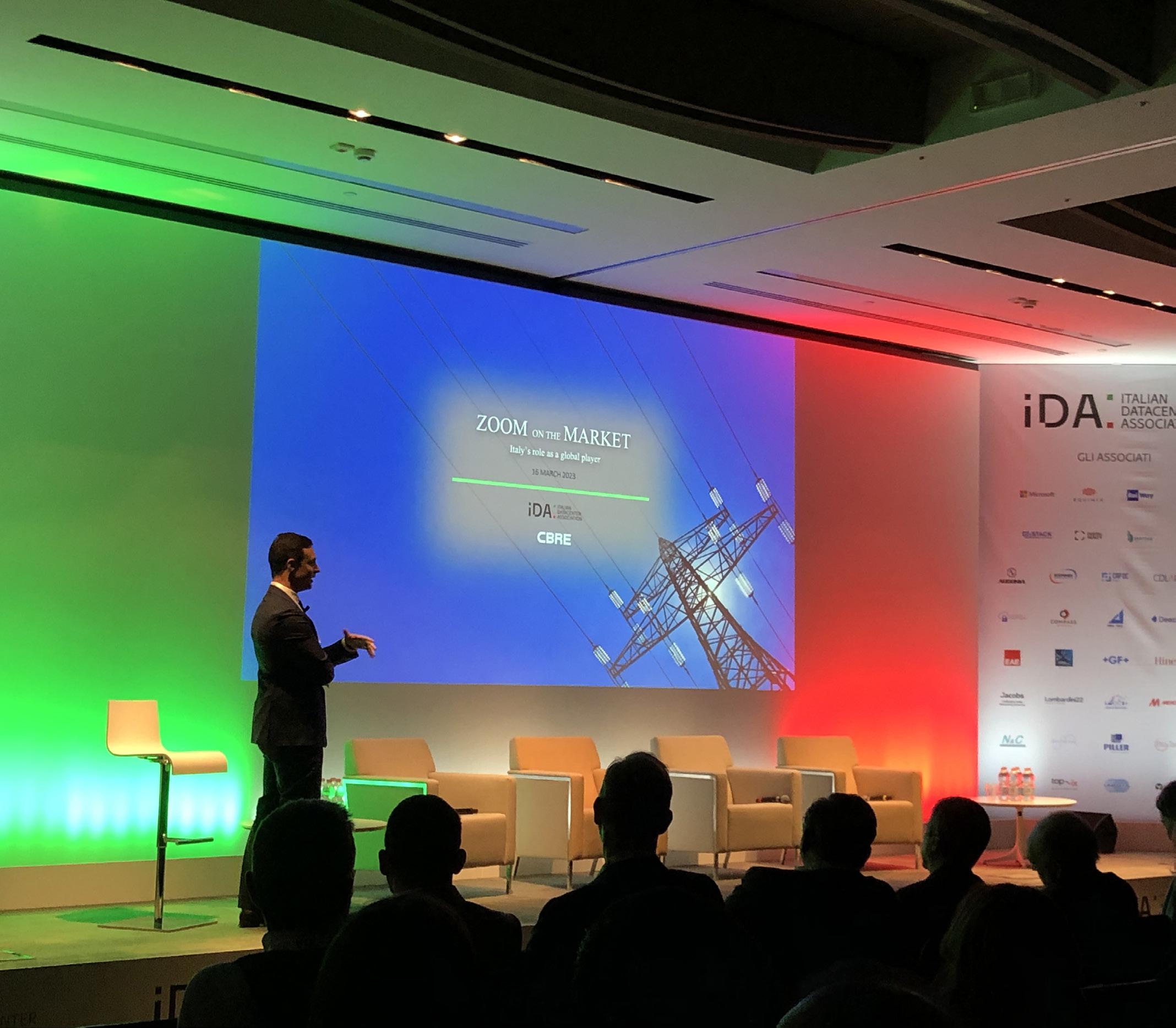
Becker addresses that more business needs to be deployed to the digital industry of Italy and to further collaborate with local authorities. “IDA is committed to be the representative source for objective information about our industry. For example, we have to inform the audience and governments about sustainability as data centers can play an important role for this matter. We explain and demonstrate to our government how, for example, centralization can lead to more efficient energy usage, promote social environmental sustainability and we have signed the Climate Neutral Data Center Pact (CNDCP) with other NTA’s in Europe.”
Another major scope of IDA is to strengthen the position of Italy as a location for data center development. “Compared to the Netherlands, people are not always aware of the importance of our digital infrastructure for our economy. They need to understand how data centers and solid infrastructure can have a positive impact on the development of a country and its gross domestic product (GDP). Therefore, having conversations with political stakeholders is very important in order to create awareness among them and thus improving our data center ecosystem.”
According to Becker, attracting data center operators and other digital parties to the Italian market is a first step in this process. “The goal is that data traffic will come directly from our data centers instead of only being a passthrough traffic point. That way, you will have a magnetism effect, thus a growing digital economy.”

Developing a digital hub also requires building permits. In Italy, application times vary by region. “In Lombardy, the region around Milan, it is much easier to get your permission compared to, for example, Roma. Luckily, you will obtain your building permit from 6 to 12 months. However, sometimes it can take you up to 18 months and if you talk about constructions with high voltage (more than 9 megawatts) it could be up to four years”, tells Becker.
In sum, IDA keeps growing after its launch and has also already formed various working groups on topics such as sustainability, energy access, energy cost, industry recognition, permits and classification and education. Becker: “For the permits and classification, our country requires a more streamlined process for the construction and operation of data centers, in addition to a clearer regulatory framework regarding land use and ATECO classification.”
Emmanuel Becker joined Equinix in August 2017 as Managing Director for Italy. Before joining Equinix, he served as Managing Director for Italy at eServGlobal, Vocalcom, Easynet Group (now Interoute) and DATA4 Group.
Outside Italy, Emmanuel has developed and supported businesses, including his consulting company BDM International, in Germany, Spain, France, Belgium and Argentina.
Emmanuel brings valuable experience to Equinix having worked in several vertical markets, particularly in the ICT and telecommunications sector. He boasts a rich network of professional relationships and he is a member of important industry associations and is an ambassador of French Tech Milan. From December 2022, he is the President of IDA (Italian Data Center Association). Emmanuel holds a degree in Computer Science from Itin-Escia in Paris
THEREFORE, I AM VERY PROUD THAT WE HAVE ALREADY REACHED THIS NUMBER IN A SHORT TERM AS IT MEANS THAT THERE WAS A STRONG INTEREST FOR AN ASSOCIATION
The European Commission launched an exploratory consultation to gather views on the potential developments of the connectivity sector and its infrastructure. For the consultation, the EU asked various stakeholders to share their views about the current situation and future of the electronic communications sector (e.g. cloud data storage, edge computing, artificial intelligence, virtual reality). However, the consultation was particularly controversial because it contained questions regarding the idea of large ISPs that big data and application providers should pay them internet traffic fees for the use of their infrastructure. Therefore, Cloud Infrastructure Service Providers of Europe (CISPE), the trade association for IaaS providers in Europe, are concerned that this tax could have a negative impact on European companies and customers. In response, they published a position paper (free download) that contains the following five outcomes about the potential consequences of the Internet tax:
1. It would lead to higher prices and therefore would constitute a hidden ‘consumer tax’
2. It would jeopardize the EU’s sustainability objectives by slowing down the transition to more energy-efficient cloud solutions

3. It would threaten the EU’s digitalization targets by hindering CAPEX investments by CISPs

4. It would distort competition in favor of large ISPs against smaller ones, as well as large content providers against their smaller competitors
5. It would allow telcos to further leverage their termination monopoly
THE EU ASKED VARIOUS STAKEHOLDERS TO SHARE THEIR VIEWS ABOUT THE CURRENT SITUATION AND FUTURE OF THE ELECTRONIC COMMUNICATIONS SECTOR.
MICROSOFT LAUNCHES ITS FIRST DATACENTER REGION IN POLAND AS DEMAND CLOUD SERVICES IS GROWING

Aruba S.p.A, Italy’s largest cloud provider and leader in data center, web hosting, e-mail, PEC and domain registration services, strengthens its renewable energy capacity with the acquisition of two new hydroelectric power plants in the province of Bergamo, near the Global Cloud Data Centre in Ponte San Pietro, with a total capacity of 2MW.
The new hydropower plants‘Paladina’ and ‘Ponte Briolo’ - share the same water intake on the Brembo river and are joined by a private adduction canal. They join the plants that were already present within Aruba’s Global Cloud Data Centeralso on the Brembo river - and the further four ones acquired by the
company in 2020 in Melegnano (MI), in Chiuppano, Calvene (VI) and in Pontebba (UD).
The entire network of Aruba’s hydroelectric power plants has a capacity of 9.2 MW for the production of clean energy and the expected annual output is approximately 50 GWh.
energy production capacity in order to reduce the impact on the environment as much as possible and to make the activities of the entire group sustainable. In addition to investment in hydroelectric plants, Aruba are also continuing investment in photovoltaic plants.
The launch of the Microsoft region is a continuation of the company’s more than 30-year engagement with Poland and a commitment to continue to support the country’s technological development of society, business and the economy.
“Microsoft’s investment in Poland will accelerate our country’s transformation into a technology hub for the Central and Eastern European region,” said Prime Minister Mateusz Morawiecki. “Thanks to the development of the Polish Digital Valley, hundreds of engineers and developers will be able to play a key role in the global economy without leaving the country. This is responsible development,” Morawiecki explained. He added that in times of economic and geopolitical uncertainty, it is also very important to maintain the highest standards of data storage security. “Building resilience in this regard is crucial for the Polish economy and society,” said Morawiecki.
Datacentered Cloud Insights 83 Datacentered Cloud Insights 82
CaixaBank, a Spain-based financial institution, announced a new strategic, multi-year partnership with Google Cloud to accelerate the bank’s transition to the cloud and drive innovation using data and analytics technologies. As a part of the agreement, the bank will leverage Google Cloud’s cloud computing, data analytics, and artificial intelligence (AI) capabilities to develop new services for its customers and drive the organization’s digital transformation.
The collaboration between CaixaBank and Google Cloud is a key element of the bank’s cloud-based strategy. This strategy is aimed at improving data analysis and leveraging AI and machine learning (ML) technology, since it is a key tool for driving the customization of the commercial offering and improving the relationship with customers. In addition, data analytics open up great potential in the decision-making process and the creation of new products and services.

Google has announced the opening of a new cloud region in Turin, Italy. The new region will serve as a strategic hub, catering to the needs of businesses and organizations across Italy and the wider European region. With this launch, customers can expect improved performance, reduced latency, and enhanced reliability when utilizing Google Cloud’s services in the area.
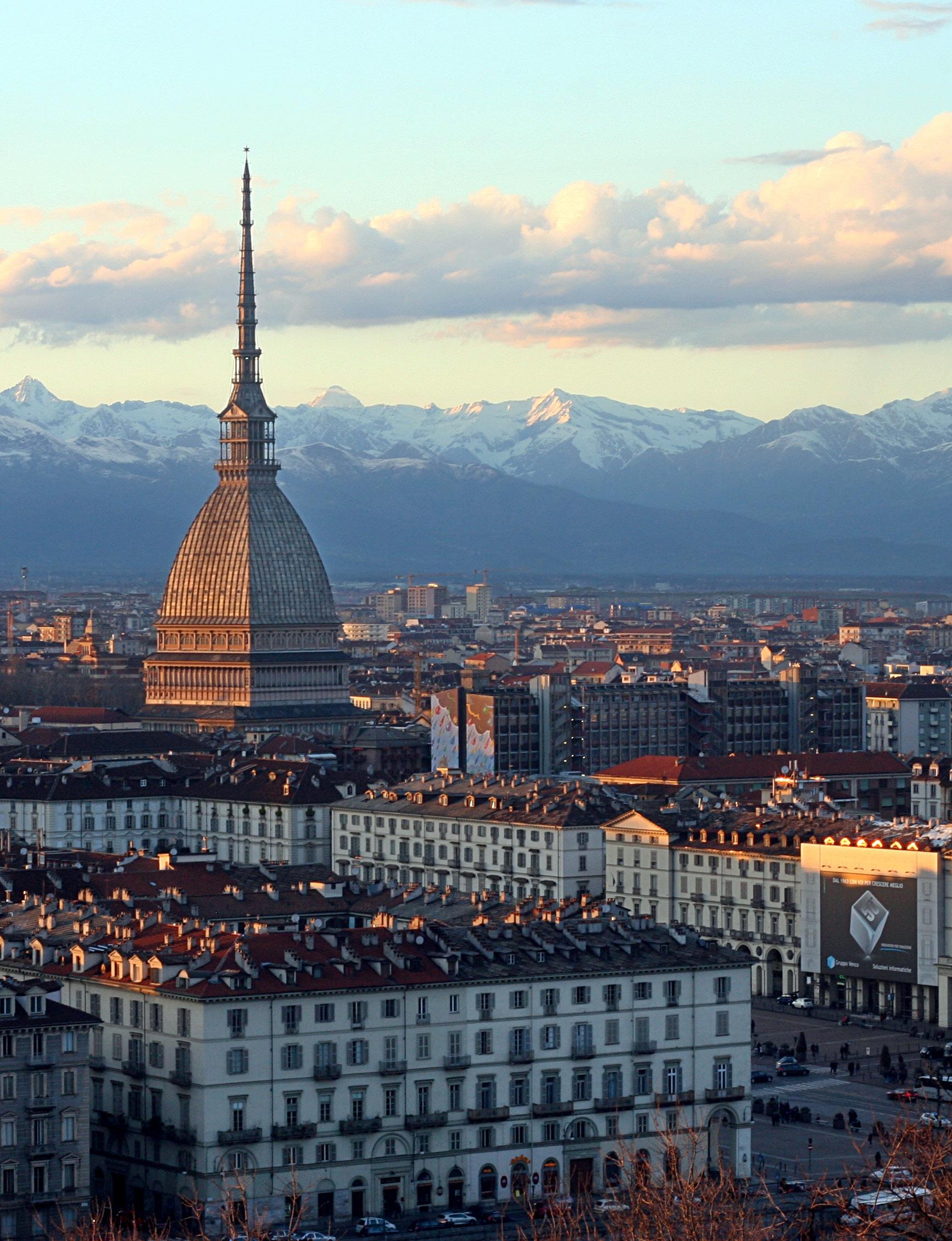
“With the availability of the Turin Google Cloud region, that follows the one of Milan, the path that will allow Intesa Sanpaolo to fully exploit the potential of cloud technology and further accelerate the process of digitization of its services, is completed,” said Enrico Bagnasco, Executive Director Information Systems of Intesa Sanpaolo. “A cloud hyperscaler like Google with two regions on the national territory will facilitate all Italian companies and the Public
Administration in accessing the cloud by providing greater security and simplifying business continuity and data protection. In parallel, the Opening Future initiatives will promote both the dissemination of digital skills in schools, SMBs and start-ups in the territories and a sustainable growth, with employment benefits and social and economic repercussions.”
A growing ecosystem of technology partners will also benefit from new Google Cloud regions in Italy. An independent study by the Digital Innovation Observatories and the Energy & Strategy group of the Milan Politecnico calculates that, thanks to the Google Cloud regions of Milan and Turin, projects across the supply chain will generate a new market for partners estimated at around €1.904 billion in the three-year period 2023-20252.
As I sat down to write this article I thought about where our industry was two years ago and where we will be in the next two. It is phenomenal how data centers went from an unknown, misunderstood element of the IT market to headlining the news and in key legislation.
So let’s look at where we are going. First off, but by no means the most important issue, is that of a negative public perception. The world is changing and this concerns citizens. Data centers are a visible representation of the changing economy - Industry 4.0 is upon us. For most in the industry this is exciting. It represents opportunity, growth and the ability to use digital technology to solve so many problems in today’s physical world: sustainability, productivity, education, social mobility and more!
But, digital transformation will be disruptive. Automation, AI and rapid data center and cloud build out makes people fear for their jobs, their cost of living, their ability to enjoy their country. It is this that will drive our agenda going forward in two very important ways.
First off, the data center industry will be disrupted as well - the digital technology of the future is not compatible with the data center of today. Technologically, we have to do a full root and branch relook at what is a data center and how it operates. As operators, we will need to rethink both our designs and how we interact with a smart, renewable energy grid.
However, it is the broad level of local, national and regional regulations that will be a game changer. We are being regulated and treated like a utility. This will mean meeting stricter standards; measuring and managing ever harder targets; and transparently reporting to myriad of agencies.
Some of these regulations will be malformed and add cost to our business. Others will be used by regulators and planning officials to implement a NIMBY* agenda that may please voters but will ultimately cost those voters in lost digital opportunities.
As I look at this have a positive outlook. The European Data Centre Association (EUDCA) can directly speak with EU officials and we have partnered with many National Trade Associations (NTAs) to share ideas and work together to better represent our members to governments. In reality, all governments want digitisation and sustainability. It is our job to work together to show regulators that digitisation needs clouds, 5G, AI, IOT and fiber optic networks. And clouds, 5G, AI, IOT and fiber optic networks all need data centers to aggregate, store, process and trade data. Europe is committed to being climate neutral in a way that will be a beacon to other countries. Europe’s unique views on data and rights of citizens will also influence how digital technologies develop globally.
In the short-term, this may be frustrating and maybe even costly. In the long run, we believe a regulatory environment can level the playing field for our industry and develop trust in the economic value of the buildings and IT we are investing in.
Michael Winterson joined Equinix in September 2007 through the acquisition of IXEurope where he was part of the founding leadership team. Now Managing Director for Equinix Services, in addition to being Vice President for Business Development, Michael has held many roles at the company. Since 2016, he is Chairman of the European Data Center Association (EUDCA).

Following the rise in prominence of the French data center market, France Datacenter has become a force in the European data center industry. “Established in 2008 and reorganized in 2017 with an expanded team, we recognize the importance of addressing the perception challenges faced by the industry”, says Géraldine Camara, managing director.
 WRITTEN BY MICHIEL VAN BLOMMESTEIN
WRITTEN BY MICHIEL VAN BLOMMESTEIN
The data center market in France has experienced significant growth over the past three years. The industry is set to witness a consistent 10 percent growth in the coming years as well, and especially the Paris data center hub is often named in one breath with other leading European locations, including even Amsterdam and Frankfurt. The location and size of the country have been important factors in that success, Camara said. “It’s a little funny
we are sometimes considered a Southern European market.” The northern part of France is only a little bit more southern than Frankfurt, and there are also hubs in other parts of the country -like Bordeaux and especially Marseille- that offer connectivity access to other parts of Europe and Northern Africa. “So our location is better described as being central.”
Under its 13 member board and Camara’s operational leadership, France Datacenter has grown to around 100 members, comprising of architects, vendors, operators and other key industry players. The board consists of the presidents of Data4 group, Equinix, Digital Realty, Global Switch and CBRE, to name a few. “One of our primary objectives is to provide members with technical expertise and insights into industry trends,” Camara explains. “We organize several annual events, including two events in Paris and two in specific regions.” Through various publications, France Datacenter disseminates valuable information on topics such as cooling techniques, commissioning procedures, and heat recycling. “Furthermore, we take on the responsibility of bridging the gap between the data center industry and the media by explaining the significance of data centers in powering smartphones and IT applications.”
Camara outlines four key priorities for the data center industry in France from 2020 to 2025. The first priority is focused on employment and training, as the industry faces a shortage of qualified personnel, as is the case in the rest of Europe. “France Datacenter aims to address this challenge by establishing a commission that is thinking about specific training to attract and nurture talent,” she explains. “Yes, it may be a digital industry, but it still needs human resources and the interest of young talent.”
The second priority she names is resilience, with a particular emphasis on cybersecurity and safety measures such as fire prevention, in order to ensure vital industries access to data and IT. Innovation for environmental sustainability, including energy consumption control and circular economy practices, is the third priority.
This is especially vital considering the active stance taken by the French government on themes concerning sustainability, Camara says. “We are being challenged by the French government to continue to improve our PUE, lower consumption, find the best solutions and come up with innovations like recycling heat.” Lastly, France Datacenter aims to enhance the competitiveness of France’s data center industry in general.
Regarding regulations, France Datacenter is actively involved in mapping the current regulatory landscape, both within France and across Europe. “Directives related to energy consumption reporting, heat recycling, and energy efficiency, such as ISO 50001 and membership in codes of conduct, are being discussed and implemented”, Camara says. The association acknowledges that these regulations present positive challenges and lead to increased efficiency and performance within the industry.

On the whole, Camara thinks the industry’s future in France looks bright. “Both Marseille and Bordeaux are getting new submarine cable connections, and especially Marseille is a true gateway to Africa and further east,” she says.
“We offer favorable climate conditions that enable free cooling for approximately 80 percent of the year. France’s market is driven by factors such as population density, connectivity, and the perception of being a vital growth market for hyperscalers in the near future. By prioritizing employment, resilience, innovation, sustainability and competitiveness, the association is proactively shaping the future of the sector “with a diverse team and a keen focus on inclusion,” Camara says.
Leading organizations from our industry publish various reports about trends, investments and more. In this section, we chose the must read reports and whitepapers and selected the main highlights for you.
The Age of Enlightenment popularized the use of reason to pursue knowledge, resulting in a society based on logic and science instead of relying on emotions and doctrine to make decisions. However, the fundamentals of enlightenment are at stake as decision makers become increasingly influenced by emotions rather than reason, which affects the data center industry. As a result, the basis of the legislation is the most controversial headline and the accompanying emotions, with rules and regulations that do not align with the sector’s realities. This makes it increasingly difficult for the data center sector to implement positive and sustainable changes.
The 9th edition of State of the Dutch Data Centers Report focuses on presenting the facts of the data center industry in the Netherlands. The facts and figures are essential for government agencies to make informed decisions about data centers. For example, the research shows that in 2023, 99% of all energy consumed by colocation data centers comes from green sources, compared to 90% in 2022. A small portion of that comes from Dutch wind and solar power.
You can download the full report via the website of the Dutch Data Center Association.
CBRE has published its quarterly report about the European Data Center Market for the first quarter of 2023.
In the most recent publication, they found that Europe’s top colocation data center markets are poised for another year of considerable growth despite economic uncertainty in Europe and declining growth of the hyperscalers cloud operations. Furthermore, CBRE expects a substantial increase in supply in the second half of the year with mega facilities that will be delivered in Paris and Frankfurt.
However, the higher cost of capital, labor and power shortages, and long equipment lead times across Europe will make the delivery of projects more difficult with profitability harder to ascertain.
All the Facts & Figures from the CBRE Europe Data Center Industry can be found on their website.
To sustain growth, the French data center industry will invest over €12 billion over the next 10 years, with a strong concentration in the Paris region.
Estimated direct investment and expenditure in data centers in France (CAPEX), 2022-2033)
The France Datacenter barometer, produced with EY-Parthenon, provides an overview of the datacenter industry in France.
There are almost 250 data centers in France, and despite their wide geographical distribution, they concentrate their power in the Ile de France and South-East regions.
The first France Datacenter / EY-Parthenon barometer shows a fast-growing industry that is investing, hiring and helping to reduce energy consumption.
Since February 2023, Vincent in ‘t Veld (49) is the new managing director of Digital Realty Netherlands. In conversation with Datacentered he speaks about his new role and the ongoing developments of the organization.
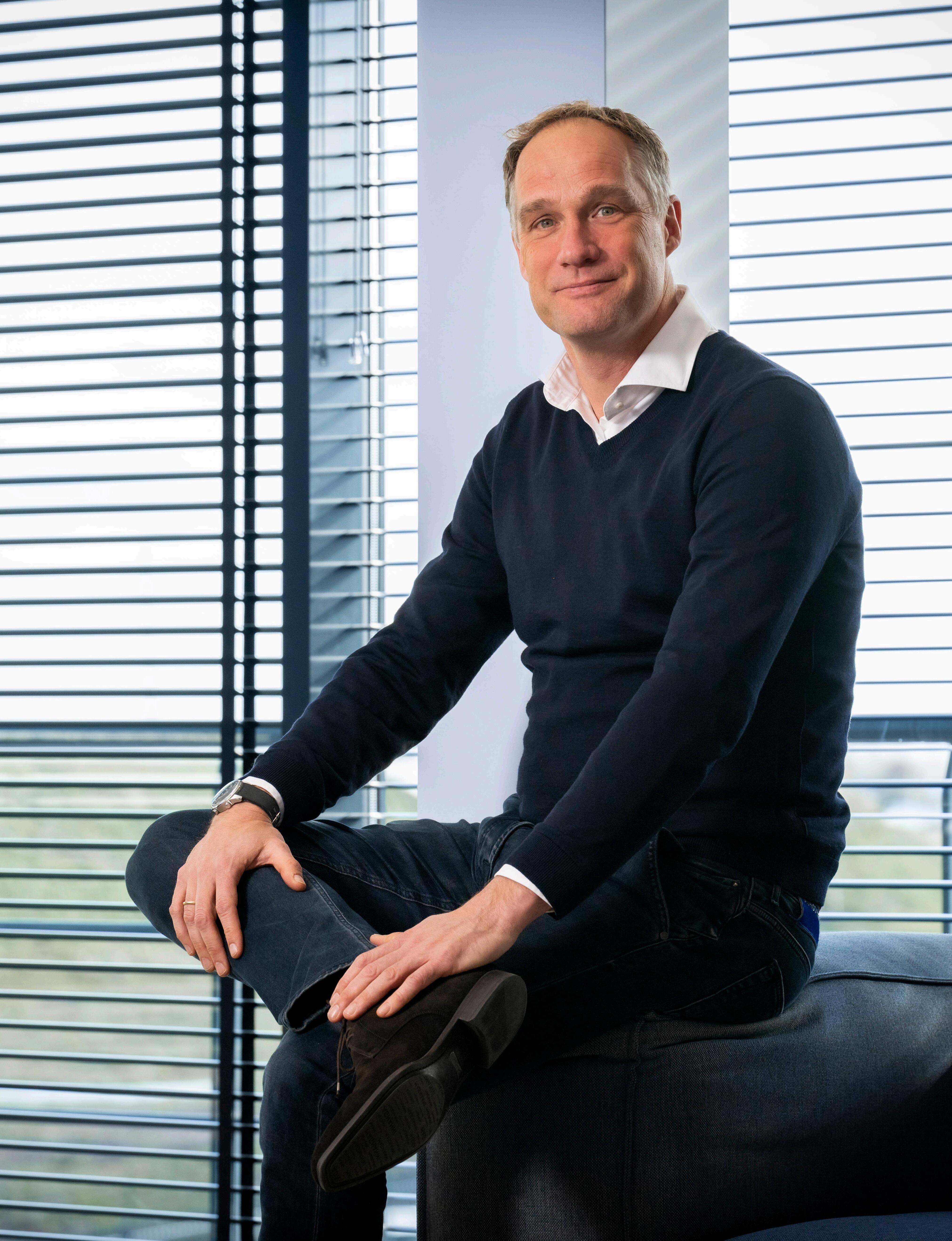 WRITTEN BY PIM KOKKE
WRITTEN BY PIM KOKKE
“Is it already 100 days?”, asks Vincent in ‘t Veld, managing director of Digital Realty Netherlands at the start of the interview. “These first hundred days have flown by as no single day has been the same so far and ended differently than you had expected. That is why stopped having
expectations for the day, but in the most positive manner as this new position is very dynamic with customers, partners, finance and HR. It is indeed different from my previous positions within the organization.
Vincent joined Interxion in 2008 and fulfilled various global functions in product management, marketing and business development. Until February 2023, he was Senior Vice President (SVP) for the Service Provider business unit globally. During these 14 years, he experienced closely the transformation of Digital Realty and the data center industry. “It is a large operation as we see continuous developments and growth. For example, the number of data centers, capacity and the construction projects around it. Our organization matures also. When I joined the company we were about 300 people globally, now we are with over 3,000 employees worldwide of which 150 at Digital Realty Netherlands. So all these developments and growth bring new challenges with it.”
Fortunately, these challenges are not new for the data center industry and the forecasts for the sector are still positive. According to the International Data Corporation (IDC) and World Economic Forum (WEF), the amount of data will grow 3-5 times in the next 3 to 4 years. Furthermore, the sources of data are also expanding; from machine learning to public/private cloud. “However, when you look at what is actually being used and analyzed from that data, it is still very limited. Only a few percent of the total information that is created from which value and insights can be extracted to improve, for example products, services and processes, is used. Therefore, the rat race is now on-going to extract value from data in order to gain competitive business advantage. If you look at it from a societal perspective, extracting insights from data related to energy can have a positive impact for the environment.”
In order to keep up with this, a state-of-the-art digital infrastructure is important for the growth of all markets. For example, the FLAP-D region (Frankfurt, London, Amsterdam, Paris and Dublin) is considered as one of the major data center markets in Europe while other traditional tier 2 markets like Madrid, Milan, Zurich and Marseille are growing even more rapidly. “Amsterdam is seen as one of the most important digital exchanges for Europe, thus being a main hub in our industry in the last 25 years. Our sea cables, business climate and highly educated people who are very proficient in English have led to this position. Now, we are getting to a point where those infrastructures are being distributed much further and closer to the user. This is needed because of the performance that is required for new applications. Moreover, we see a more wide-spread and balanced market with the rise of Madrid and Rome.”
At this moment, Digital Realty has over 300 data centers worldwide.
“We are a digital infrastructure facilitator thus contributing to the digital economy and society. And since we are active in over 50 cities globally, we are constantly at the concentration of people, networks and economies. For example, research has shown that in the upcoming decades five of the ten most populated cities will be based in Africa. Their digital infrastructure is growing and they have the advantage that most countries will start with the newest 5G networks, instead of GPRS or EDGE. At Digital Realty we have built a presence in Africa over the past few years with active operations in Nairobi and Mombasso in Kenya, Lagos in Nigeria and through our acquistion of Teraco in Johannesburg and Cape Town in South Africa. Our global platform continues to grow and expand to service the ever growing global needs of our customers.

As mentioned above, in ‘t Veld was SVP in which he was exploring and developing long-term strategies. He mentions that in this industry - as with any other industry - decision-making, differentiation and making fact-based choices are key. So in that way, he already had some experience which led eventually to him being appointed as managing director. “I always had the need to manage more generally and be more broadly active; from client to account. Furthermore, feel involved in all aspects and sometimes I do get too inquisitive and look for information and insights to understand the internal and external value chains.”
But how did he respond when he heard the news of becoming MD? “It felt good straight away, but also knew that it was going to be challenging and had to built confidence on the job. My predecessor Michel van den Assem was active here for over 23 years and I have a lot of respect for him. I have always worked fairly closely as had worked closely with Michel on several projects. My two children, who are 18 and 20, were also involved and interested but they are of course busier with their own lives (he laughs). My wife was a little skeptical because she thought I would miss my previous global role in which travelled from North America to Asia and worked with some many different cultures and in different markets which was always highly inspiring. But in my first hundred days, she sees that I sing and whistle a lot at home - which is an important indicator for me - and I get up easily in the morning.”
The future for the industry and Digital Realty remains clear. “Over five years, expect that we will continue to grow as an organization; from people to square footage. Digitalization will expand and the pressure on areas such as sustainability, the demands of our customers and the quality will grow. Therefore, we have to continuously keep doing our utmost in these areas. As Digital Realty Netherlands, we are pretty far along in that, and Digital Realty Global is investing a lot in new initiatives. But one of the trajectories we are on is being able to measure the sustainability of our solutions and have a positive long-term effect on the sustainability of our planet. So how can we be sustainably functional as an industry? That will be at the core, which will positively impact the increasing maturity of our data center industry.”
1991-1995 MSc Economics, Hogere Europese Beroepen Opleiding (HEBO) (European Studies) at Haagse Hogeschool
1991-1992 Economics (Master’s degree) at Universität Paderborn
1995-1999 Key Account Manager at KPN
1999-2002 Senior Product Manager art KPNQwest
2002-2008 Head of Mobile Data Services at BT Global Services
I FEEL INVOLVED IN ALL ASPECTS AND SOMETIMES I DO GET TOO INQUISITIVE AND LOOK FOR INFORMATION AND INSIGHTS TO UNDERSTAND THE INTERNAL AND EXTERNAL VALUE CHAINS

In the Age of Enlightenment, reason and science were championed as the foundation for knowledge and decision-making. However, in today’s society, there seems to be a departure from these fundamental principles. Emotion increasingly influences decision-makers, resulting in a concerning trend that affects various industries, including the data center sector. The consequences are evident as legislation is often crafted based on controversial headlines and accompanying emotions, rather than a rational assessment of facts. This approach creates rules and regulations that fail to align with the realities of the data center sector, making it challenging to implement positive changes.
One of the primary responsibilities of the government is to ensure that society functions optimally, promoting fairness and providing equal opportunities for all. However, when decisions are made without considering the facts, the playing field becomes uneven. A notable example of this imbalance can be seen in the portrayal of data centers as excessive water consumers. Despite the reality that data centers use considerably less water compared to many other industries in the Netherlands, they are frequently singled out by the government and politicians for their water consumption. Unfortunately, this approach disregards the impact of higher water consumers, diverting attention from the real issues and hindering progress. Consequently, organizations with more significant water consumption are restricted to a lesser extent, failing to address the genuine problems.
To effectively address the pressing challenges faced by our society, such as energy grid congestion, low water reserves, and inflation, it is crucial to rely on facts as the basis for legislation. Emotions, while important, should not dictate the decision-making process. By acknowledging and incorporating factual information, policymakers can
develop informed and effective solutions that align with the realities of the industry and the needs of society as a whole.
Facts matter because they provide a solid foundation for decision-making. They help avoid the pitfalls of knee-jerk reactions driven solely by emotional responses. By embracing facts, decision-makers can craft legislation that accurately reflects the challenges at hand, enabling effective solutions and positive change. Additionally, basing legislation on facts fosters transparency, accountability, and fairness, ensuring that all stakeholders are treated equitably.
In conclusion, the principles of the Age of Enlightenment, which emphasized reason and science, remain as relevant today as they were centuries ago. The data center sector serves as an example of the consequences of straying from the importance of facts in decision-making and legislation. It is vital for the government and policymakers to prioritize facts over emotions, leveraging evidence-based approaches to develop legislation that addresses the real problems society faces. By doing so, we can ensure a fair and prosperous future for all.
Stijn Grove immerses himself daily in the heart of the Dutch digital economy. As the director of the Dutch Data Center Association, he represents the data center sector of the Netherlands. At the same time, he encourages foreign parties - ranging from multinationals to start-ups - to establish themselves in the Netherlands and make use of our stable digital network. In his role as director of the digital mainport organization Digital Gateway to Europe, he also acts as an ambassador for the digital sector of the Netherlands, reaching far beyond our national borders.
A recent study of the Fontys School of Journalism about media framing and data centers indicates that an open and transparent debate is needed in order to challenge the assumptions about data centers.
 ARTICLE WRITTEN BY PIM KOKKE RESEARCH BY DANIËLLE ARETS, CEES-JAN PEN, BART WERNAART & KEES VERHOEVEN
ARTICLE WRITTEN BY PIM KOKKE RESEARCH BY DANIËLLE ARETS, CEES-JAN PEN, BART WERNAART & KEES VERHOEVEN
The Netherlands is Europe’s digital hub, or at least so we read in the coalition agreement. But the way the current discussion about data centers is conducted, that hub seems more like a Bermuda Triangle; a devil’s triangle in which arguments seem to disappear and mystifications prevail. If the Netherlands wants to manifest itself as a digital frontrunner, we need to conduct the political and journalistic debate about our data infrastructure with the right facts and figures.
The paragraph above is one of the main conclusions from a recent study by the Fontys School of Journalism, a Dutch University of Applied Sciences. In the study, researchers Dennis Boom and Emma van Nuland analyzed how four major Dutch newspapers (De Volkskrant Trouw, De Telegraaf and AD) reported on ‘data centers’ over the past four years (April 28, 2018 - April 28, 2021). It turns out that the theme is only sparsely covered. In total, AD mentioned the topic 46 times and De Volkskrant in 25 articles. At Trouw and De Telegraaf, after careful reading, only 36 articles remained.
The researchers were supported by their supervisors Daniëlle Arets, Cees-Jan Pen and Bart Wernaart. Kees Verhoeven, former member of the House of Representatives (in Dutch: Tweede Kamer) and advisor Digital Transformation of the Dutch Data Center Association, supported the study. Arets: “Because of the sparse media coverage, it is not surprising that the theme is also greatly underexposed on the political and policy agendas. For example, a related analysis about the party programs for both the municipal and provincial elections showed that political parties barely mention the theme of data centers. Only in the Province of Zeeland some parties refer to data hubs, but mainly in a negative sense as ‘large electricity users that add nothing to the Zeeland economy.’”
According to the researchers, there are three themes that dominate the journalistic reporting around data centers: data centers in relation to energy use, data centers and spatial planning, and data centers linked to the economic added value for the region. However, those themes are not always highlighted with the right data and, in the case of De Telegraaf and Trouw, are mostly written with a negative framing. De Volkskrant and AD are more balanced in their expressions. None of the newspaper articles highlight other perspectives on data centers, such as the relationship to policy and governance or our own data behavior.


Many articles about data centers refer to the massive amount of energy that data centers use. For example, the word ‘energy guzzler’ occurs in articles. A data center has one purpose: to ensure that computer servers with digital applications are always running, 365 days a year, 7 days a week, 24 hours a day. The temperature is always 24 degrees, so the equipment remains cooled day and night and does not become overloaded. Simultaneously keeping the servers running and cooling them consumes around 3.7 billion kilowatt hours (TWh) in 2021.
However, the storage and supply of data in data centers is more efficient than when companies organize their storage individually. Furthermore, the study shows that data centers have worked hard in recent years to become more energy efficient. For example, The International Energy Agency (IEA) calculated that the electricity consumption of data centers between 2010 and 2018 grew by only 5 percent worldwide, while our data traffic grew tenfold and data storage grew 25 times.
The researchers found that this fact is only sporadically highlighted in journalistic articles. For example, in a balanced and well-supported article in De Volkskrant, journalist Van de Weijer refers to Statistics Netherlands (CBS) figures, which calculated that data centers use a total of 2.7% of all electricity in 2019, 66% more than
two years earlier. He outlines that this paints a distorted picture because many companies that manage data in-house now do so at data centers. In another article, Van de Weijer refers to a study by Science that calculated that data centers use less energy than expected. Energy conservation and more efficient computers have made data centers 20 percent more efficient annually.
And yes, there is definitely a need to critically monitor the energy consumption of data centers but more in a sense that we need to use the right data and, most importantly, look at where or by whom that data is generated.

According to the study, not a single journalistic article refers to the role of consumers, nor to companies and institutions using more and more data. This with the exception of an opinion article that was submitted by Kathalijne Buitenweg and Richard Wouters of GroenLinks in De Volkskrant. They wrote: “With data making a growing demand on energy and raw materials, it is necessary to think more carefully about the social usefulness of all that data. Especially since innovations like 5G and artificial intelligence could lead to a real data explosion.”
Arets: “It’s a valid argument as we have become accustomed to always being able to access information online and store files endlessly. The Dutch Consumer and Market Authority calculated that we will consume 346 petabytes of mobile data in the third quarter of 2021; 31 percent more than a year earlier. It is expected that -against the context of new AI driven services, and the introduction of more smart data-intensive devices, our data usage will explode. Therefore, Buitenweg and Wouters advocate the introduction of data limits, which would limit the data use of consumers and businesses.”
In the analyzed media, however, data behavior and data reduction in relation to data centers is not discussed. In doing so, we shortchange the debate to the following statement: no we don’t want energy guzzlers, but we very much want fast Internet.
Another theme that comes up in several articles about data centers is that data centers are considered as ‘unsightly gray boxes’. According to the study, one article in Trouw addresses for example this issue in which investigative journalist Joop Bouma discusses the report Care for the Landscape by the Netherlands Environmental Assessment Agency, which warns of the landscape’s withering away and calls for more government direction. “Is this the landscape we want?”, asks Bouma.
In another article in Trouw, landscape architect Adriaan Geuze fulminates against data centers as a many-headed monster that is gradually destroying the unique Dutch
cultural landscape. “We created a crushingly beautiful, unique and rich spectrum of cultural landscapes on clay, peat and higher grounds. We inhabited terps, we reclaimed peat, we allowed new land to silt up, and we made polders. We are now destroying that in a generation, to make way for a new cultural landscape of boxes, greenhouses, data centers, solar farms, windmills and noise barriers.”
Geuze makes a distinction between boxes and data centers, by referring the so-called boxes to the distribution centers that are rapidly appearing in the Netherlands. Currently, there are some 9,000 distribution centers occupying a total of 40 million square meters. The PBL report also points on withering to both data centers and distribution centers.
Yet, in many journalistic articles both are lumped together. But for the sake of purity of the debate, it is good to approach data centers and distribution centers separately because they serve different purposes, especially in terms of economic added value.
The economic value of data centers is, according to the researchers, the most complicated in the data center debate. Many journalistic articles refer to the limited economic added value because, relative to the square meters, only a small number of people work in a data center. However, this is not a valid argument. Data centers do add direct employment value and drive the digital economy. For example, all data centers combined directly employ more than 5.400 full-time equivalent (FTE), and indirectly more than 12.000 FTEs. That is an increase of 3% compared to last year. The continued strong growth in the hyperscale market was counteracted by a slight decline in the enterprise sector and moderate growth in colocation. The enterprise sector still employs almost half of all data center FTEs (48%). Employment in enterprise data centers is slowly decreasing as enterprise data centers continue to consolidate and workloads move into the cloud. However, over the next five years, a decline of 2% per year is expected.
The three themes mentioned culminated in articles about Meta coming to the Netherlands. Last year, Facebook’s parent company wanted to build a hyperscale data center near Zeewolde. The planned data center, measuring 166 acres, faced a storm of criticism. In the study, many journalistic articles referred-with metaphors such as ‘David versus Goliath’ (De Telegraaf) to describe the tech giant that would “take over” the polder landscape. According to the study, this “take over” refers to the use of energy but also to the economic and power position of big tech companies. For example, the articles framed Meta as a company that would “mainly take our energy and land, but hardly provide economic profit and/or employment.”
According to the researchers, the government is finding it difficult to grasp that governing role. In the Spatial Strategy for Data Centers, drawn up in 2019 by the Ministry of Economic Affairs, providing space for data centers is considered necessary to safeguard the digital infrastructure of today’s digital economy. The coalition agreement also writes about the importance of data centers for the international economy. But where that space should be made and what conditions it should meet, remains unmentioned.
Meanwhile, the problem is being passed on to provinces and municipalities that are struggling with a huge shortage of business parks and, more generally, space. The City of Amsterdam decided in 2019 to impose a moratorium on data centers, but had to change that ban a year later. New data centers are now allowed in places where there are already establishments. When you look at the provinces and their own data center strategy, North Holland was the first province with its own strategy in which both the advantages and disadvantages of data centers in relation to energy and space are mentioned.
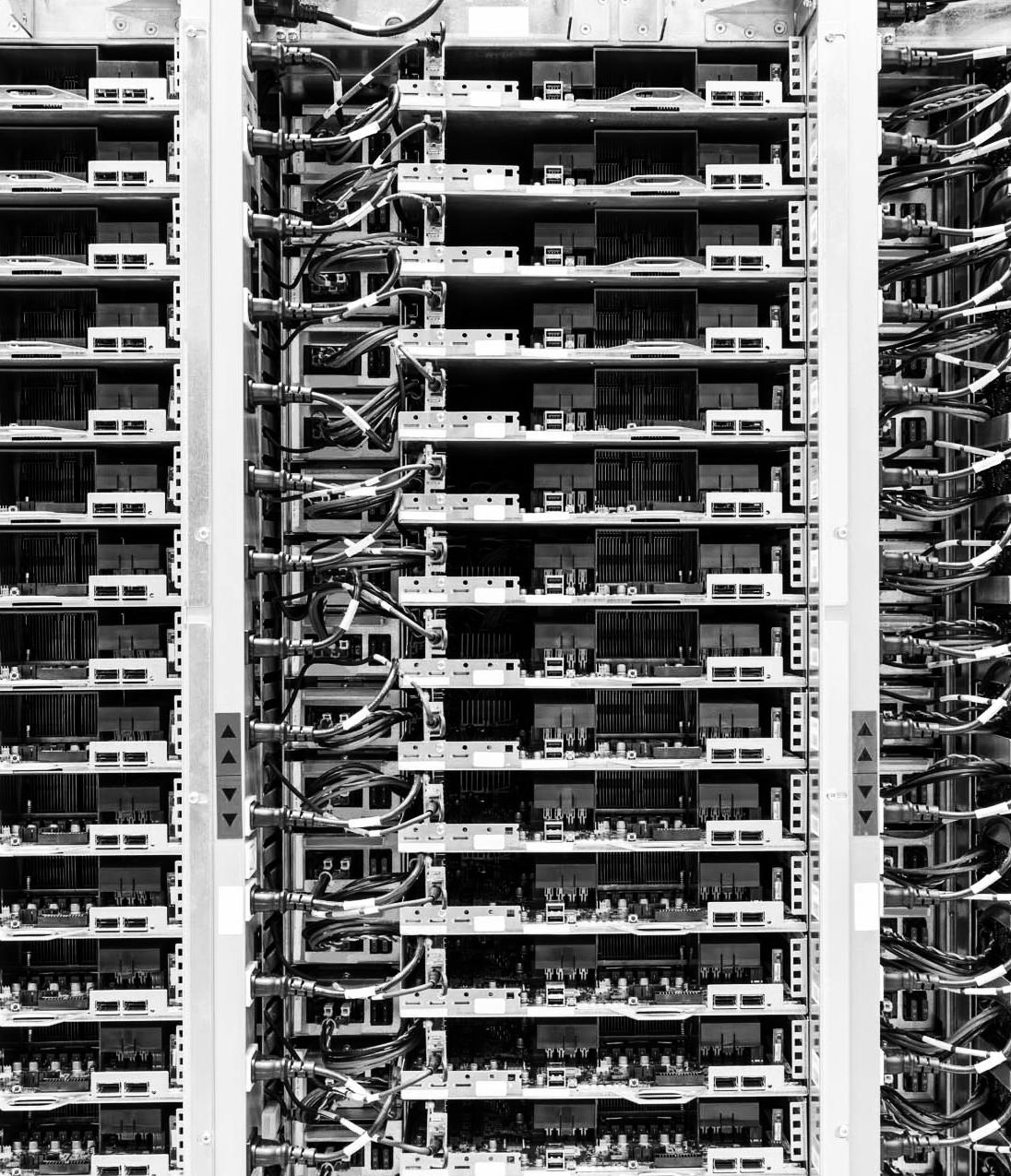
Meta eventually decided to stop the project. Arets: “The discussion addresses an important topic: how do we govern Goliaths like Meta as well as other data centers? And who is actually David here?”
In recent years, the Province of Brabant, began to adopt a more selective policy on “the doom” with various municipalities. Earlier this year, a ‘preparatory decision’ was made prohibiting the establishment and development of large-scale logistics throughout Brabant, with the exception of locations on which the province has made agreements with municipalities. There is no separate mention of data centers. This is strange because when it comes to facilitating the growing demand for data, data centers have their own policy.
Decision-making is now primarily taken from a spatial planning perspective, which means that other aspects remain underexposed. The Rathenau Instituut, for example, published last year an special Parliamentary report on data centers integral policy strategy.
That integral approach is missing from the political debate as well as from journalistic reporting on data centers. Therefore, a broader perspective on balancing spatial, economic, sustainable and political issues is needed. The latter is also acclaimed by the Rathenau Institute that asks how we want to construct our digital infrastructure.
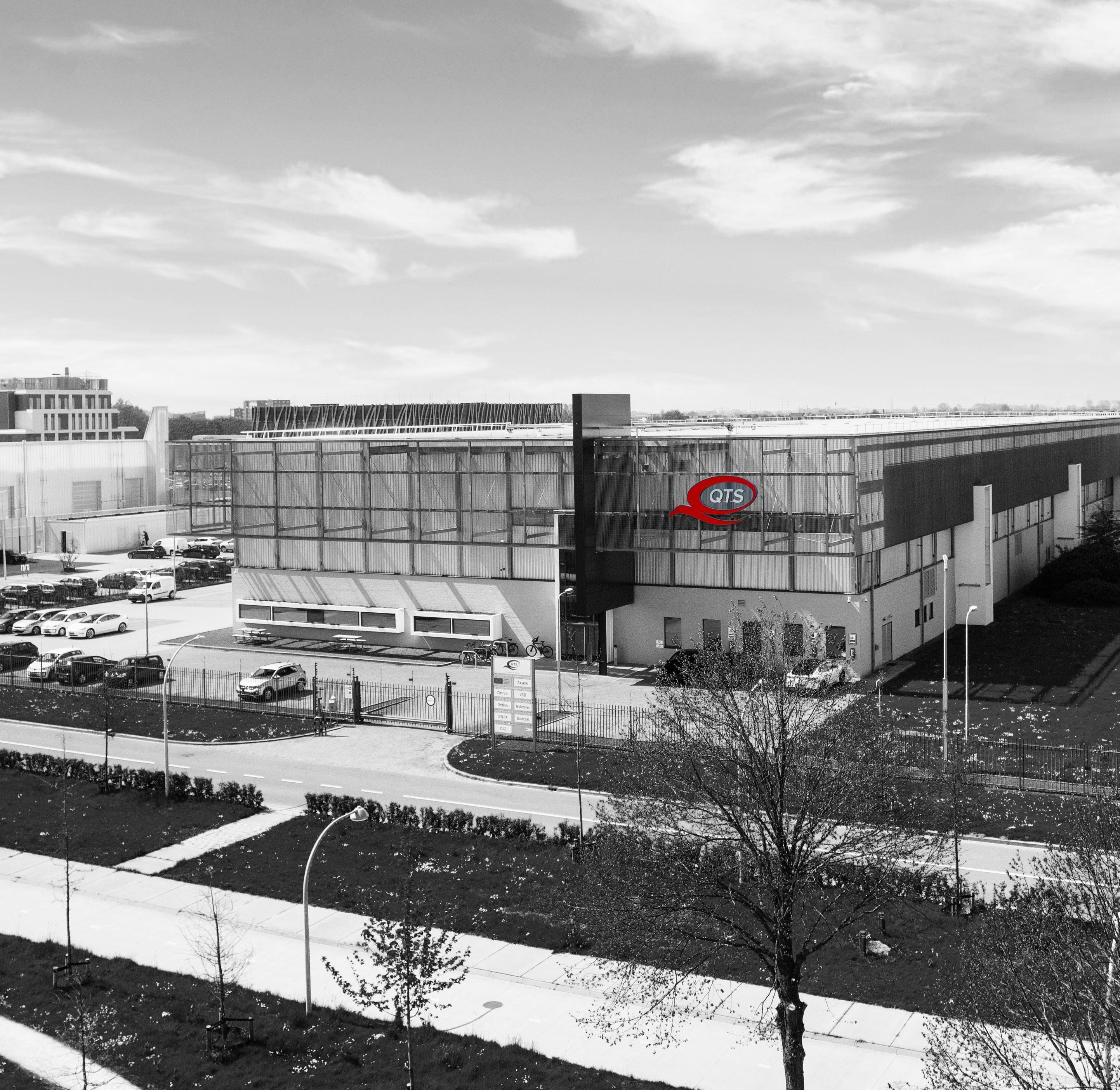
This question is relevant, but is only briefly mentioned in one article: an essay in Trouw which was submitted by dr. ir. Martijntje Smits. Smits argues for seeing data companies as utility centers, and thus thinking more carefully about their social usefulness and necessity. An argument that is also mentioned in the Rathenau report; “For although the digital infrastructure is almost entirely in private hands, it now also has characteristics of an essential utility.”
If we start seeing data centers as a basic utility, it might also help move the debate forward. After all, when it comes to transmission towers - not a pretty sight in the landscape - the discussion does not seem nearly as fiercely divided as around data centers.
In sum, it would be desirable if the debate, the framing and reporting is initiated on a broad social discussion about our future with data centers, based on facts and figures and far away from assumptions and gut feelings.
The goal is clear for us as individuals and businesses – we have to change the way we use the earth’s finite resources. That means using energy that doesn’t pollute the environment, doesn’t produce greenhouse gases and doesn’t deplete scarce natural resources.
There are many ways to achieve these environmental goals on the road to Net Zero, but to understand if we are going in the right direction, we first need to establish a baseline. How much energy are we using now? How much of this energy comes from renewable sources? How much water are we using, and what is the impact of this water usage?
The good news is that, when it comes to measurement standardisation, much of the work has already been done over the past decade. We’ve created a comprehensive set of KPIs and captured them in EN and ISO/IEC standards. All you have to do is grab these documents, choose the relevant KPI implementation and project it onto your data center. Start measuring and, a year later, here are the results!
And such action is the precise intention of the proposed changes to the EU Energy Efficiency Directive (EED) –measure and report. The reporting is a vital part of the intended outcome of the directive changes. Without communication, there will be no awareness of any data center variations, making improvement harder to achieve.

Personally, am not a fan of the latest proposal to increase the reporting threshold from 100kW to 500kW installed IT power. I think this is a missed opportunity in terms of
understanding and improving this class of data center. After all, these are the data centers (>100 KW) with huge potential to improve by measuring only the basic KPIs. PUEs of over 2 are not uncommon and massive improvements can be made just by raising awareness.
The non-public reporting obligation on server utilisation is one of the other very interesting proposals for the EED. This forces IT and infrastructure to work together in collecting data. This can be across company borders and will involve multiple disciplines. It is often suggested that server utilisation is not the best proxy for resource efficiency improvement, but can guarantee that with measuring and reporting this discussion will be re-visited. When you’re ready to take the next step, after gaining insight by obtaining the KPIs, evaluate them and measure how much progress you have made – what level of sustainability maturity you have achieved.
The original Maturity Model of the Green Grid is laid out in an EN Technical Specification (50600-5-1) and has been updated annually. The framework provides an extensive set of recommended practices originating from the EU Code of Conduct, represented in a clear spider diagram. By implementing the model, the benefits will become clear over time.
The first step is measuring and reporting. The second step is acting and improving. But be realistic. Lowering a PUE from 1.2 to 1.15 can be a laudable but very complex goal, while a software refresh cycle might give the same kWh gain with much less effort. Measure, communicate, collaborate and the results will come.
Stroomkr8 is an independent energy consultancy company. They support their clients on all kinds of energy sourcing activities, from strategic/conceptual matters to daily and operational practice. They buy and sell energy for their clients in 17 different countries with a team of highly experienced colleagues within both supply companies and consultancy.
More information: www.stroomkr8.nl
After years of relatively stable prices on all energy commodities, the energy world has changed significantly last year. The Russian invasion in Ukraine, and consequently the European ban on Russian gas, has forced Europe to review their energy supply strategies to a completely different supply model. Last year, the uncertainty and fear for supply interruption and even outages pushed prices beyond any thinkable level. Luckily, markets calmed down since the peak in August 2022 and although they are still not on the level fromf 2 to 3 years ago, markets are looking for ‘The New Normal’.
Although the Russian invasion had a major impact, the market started to change already one year before. The overall demand was increasing and another important factor was the impact of renewable energy and pressure on non-sustainable power generation. Coal power plants were forced to close, Germany nuclear power plants are closing and the overall renewable production is increasing fast, causing a much more volatile and asynchronized supply and demand profile compared to the traditional fossil/nuclear generation. This requires more flexible (and more expensive) generation assets. These developments, combined with further strengthening CO2 reduction targets and plans to change the current EU Allowances (EUA) certificate scheme, create a whole new energy landscape throughout Europe.
So far, 2023 has been favourable for companies that have not hedged positions during the 2022 price peaks. This was expected after the almost unrealistic price levels of last year. During the first months, the biggest worry for cold winters and supply issues during January/February reduced because of warm weather, which had a double effect on the energy futures. Not only did it show that even with an almost total cut of Russian gas through the traditional pipelines we were able to fulfil our needs, the continued availability of supply and decrease of demand (due to less cold and demand destruction because of still relatively high prices) resulted in high gas storage levels. This had not only a positive result on the spot prices, but also on futures as the risk on supply issues
reduced. Due to the reduced demand it was also much easier to maintain gas storages on comfortable levels. In the graph below this is clearly visible as we are already 20% ahead of 2022 storage levels, which will secure fully filled storages for the upcoming winter.
The reason we see this as an important fundamental for power cost development and for data centers to follow, is the fact that the majority of today’s Power generation in the Netherlands (beside wind and solar) is coming from flexible gas driven power generation. The price of gas still shows a strong correlation between power on both spot and futures markets. Therefore, we are closely following the gas markets and see this as one of the most important price fundamentals at this moment.
Current
June ‘21 50%
June ‘23 69%
Future contracts EUA’s
Another important driver for power prices is the increasing cost of CO2 (EUA) certificates as required by the non-sustainable power generation plants. Although the scheme is in place for several years now, the price has increased year-over-year (YoY) as the amount of free/available certificates has decreased over the years leading to significant price pressure until March as the deadline for the 2022 EUA obligations expired. The reason for this is that all companies that are part of the scheme have to fulfil their obligations. This had a direct impact on power prices as well, considering gas and CO2 prices
determine clean spreads for power generation. This consequence is something to keep in mind for the coming year as this effect might become more and more a price increasing pattern. After March, prices of EUA corrected because of the decreased demand to submit certificates. On top of the steady price increase, the European Union has proposed to change the EUA scheme to reduce the amount of free certificates even further for energy intensive industries. The final decisions on this matter are expected in the coming weeks/months.
The Power Forward Market graphs for Europe and the Netherlands also clearly show the downward rally since the record prices from summer 2022. Current price futures move around € 110 and € 130. These prices are still higher than 2-3 years ago, but much more acceptable/explainable to customers and far less volatile than last year.
jan-21feb-21mrt-21apr-21mei-21jun-21jul-21aug-21sep-21okt-21nov-21dec-21jan-22feb-22mrt-22apr-22mei-22jun-22jul-22aug-22sep-22okt-22nov-22dec-22jan-23feb-23mrt-23apr-23mei-23jun-23
THE PRICE OF GAS STILL SHOWS A STRONG CORRELATION BETWEEN POWER ON BOTH SPOT AND FUTURES MARKETS
“
As mentioned, renewable energy production is still growing rapidly in Europe thus impacting supply and price levels as demand does not follow supply 24/7. Looking in more detail for the Netherlands, last year the Dutch energy mix consisted of ~16 % renewable energy. This increase of installed capacity, so far in 2023, has led to more negative price hours (+100hr) on the spot market
than in 2022 (~80 hrs) in total as production of wind and solar installations exceeds demand. In the graph below the increase of solar is clearly visible, growing almost 1000MW/YoY. This also resulted in a remarkable situation. We now often see that peak prices are lower than off-peak during Q2/Q3, as during the nights fossil installations take over production for demand.
Depending on the energy strategy data centers might only be exposed on the spot market for a limited amount and therefore have limited advantage on this. But given the increase in solar production, it is likely that in the coming years this will increase YoY, which will form our estimate to influence future peak prices, especially on Q2/Q3 future products. Combining this development with the increasing cooling demand and thus power consumption of data centers, there might be an opportunity when closing your energy positions for Q2/Q3.
jan-17apr-17jul-17okt-17jan-18apr-18jul-18okt-18jan-19apr-19jul-19okt-19jan-20apr-20jul-20okt-20jan-21apr-21jul-21okt-21jan-22apr-22jul-22okt-22jan-23apr-23
But how will the prices develop in the upcoming months?
As with all commodity markets, this depends on many factors. Therefore, we give a view on some key power price fundamentals:
With the renewable energy supply still increasing and the biggest risk of unstable gas inflow for Europe seemingly covered, the supply side is expected to be positive. Also considering many new agreements and physical capacity on Liquefied Natural Gas (LNG) to replace Russian gas supply that are not yet even operational and will start in coming months/s and years. In the long term, we see many investments on the supply side, such as more renewables and even more LNG terminals coming online. Therefore, we see strong prices increases as happened in 2022 as unlikely at the moment, but with low liquidity in the market for future contracts only a spark is enough to set everything ‘on fire’. Furthermore, as a society we always have to keep in mind that major events such as that we’ve seen in the last year, can have (short) impact on prices. A long term strategy will reduce this risk significantly.
From an economical point of view we see a mixed picture. So far the economies of China, US and EU are struggling as we see the first official recession figures hitting us from these regions. This is beneficial from a demand point of view as this will have an impact on all energy commodities including oil, gas and power. The risk here is that with the switch to LNG in Europe, we are now even more playing on a global demand level. Sellers can send their LNG to the highest bid location as LNG is much easier
to transport. In short, from an economic perspective we see price pressure, but attention is required as global exposure has increased significantly.
With the pressure on CO2 reduction and high power prices the amount of renewable energy is increasing and we know some high capacity offshore wind projects are currently in progress of being developed. With the amount of renewable energy already exceeding demand at certain points during the day (especially for solar), this becomes more important. However, this development is not only applicable on spot prices but also on future products and puts pressure on future prices.
Based on the many drivers around energy pricing, we do believe the biggest correction after the 2022 price surge has taken place, which is also seen in the moving average price view below. And although we saw some negative price movement mid-June, the key fundamentals look positive to keep prices relatively stable or even driving them further down. It goes without saying to “never catch a falling knife”, but because of low liquidity we would advise - in case of a desire for budget securityto at least fix a part of your position to avoid exposure in case of unexpected new events and spread your risk in a firm and well structured buying strategy. A Power Purchase Agreement (PPA) could also help in gaining price security, something we will look into in the next update. In the next update, we will also review pricing developments throughout FLAP-D and assess pricing and volatility risks throughout the last few years.
The Far North Fiber project, which aims to build the first pan-Arctic submarine cable system connecting Europe and Asia via North America, takes a major step forward with the start of the cable route study.
The Far North Fiber (FNF) project is carried out by the international joint venture Far North Fiber Inc., formed by Cinia Oy (Finland), Far North Digital (USA) and ARTERIA Networks Corporation (Japan). The cable route study of the project will be carried out in cooperation with Alcatel Submarine Networks (ASN), as leading technology partner and contractor for this project.
The planned cable system will run from Japan, via the Northwest Passage, to Europe with a landing in Alaska. European landings are planned in Norway, adjacent to Finland, and Ireland. There are also several branching units designed along the route to accommodate future branch connections in the Pacific, Canadian Arctic, and Atlantic. It is estimated that the approx. 15,000 km long submarine cable system will be operational by the end of 2026. The project has received funding from the EU’s Connecting Europe Facility (CEF Digital).
The Cable Route Study (CRS), along with the marine survey, is a critical component of the project. The results will be used to define the best route for the Far North Fiber cable system in terms of safety, reliability, cultural and environmental factors, and economics. ASN’s expertise in the Arctic region is a profound asset in the realization of this project. The cable route study will be completed in 2023. The results of the CRS will support the upcoming marine survey, also scheduled to begin during 2023.
The FTTH Council, the industry association in Europe, has released various reports about the latest figures on fiber deployment trends in Europe. One of them is the Fiber-to-the-Home/Business (FTTH/B) Forecast for the upcoming five years. It confirms the positive trend of fiber rollouts across Europe, with full-fiber connectivity being a clear priority for EU authorities, national governments, and market players across Europe.
For example, the data foresee around 211 million homes passed for FTTH/B in 2028 in EU27+UK and 308 million homes passed in the EU39 region. It is expected that the top 3 countries in terms of homes passed will be Germany (33,5 million), France (33,2 million), and the United Kingdom (30,7 million). Furthermore, the number of subscribers is expected to reach 137
million in EU27+UK and 196 million in EU39 region, with take-up rates experiencing steady growth in both regions.
The physical limitation of existing cable and copper networks in terms of bandwidth is pushing telecom players to deploy full fiber solutions. In addition, increased traffic demand in the region is pushing operators to update their networks to full fiber in order to be ready for new traffic peaks. Thanks to recently launched national programmes coupled with DAE targets for 2025 & 2030, full-fiber connectivity will be reaching new high levels in European countries.
On the technology side, the data report a significant trend whereby PON is gradually but clearly prevailing over point-to-point fiber, as a consequence of the progress of PON technologies on one side, and the strong focus on power consumption and sustainability on the other.
To read the full FTTH/B Forecast 2023-2018 report, you can visit the website of the FTTH Council.
Stonepeak, an investment firm specialized in infrastructure and real assets, recapitalizes euNetworks, an bandwidth infrastructure company. The recapitalization is being effectuated as a sale of euNetworks anchored by a Stonepeak managed fund alongside strategic investments from Dutch pension fund APG Asset Management (APG) and Investment Management Corporation of Ontario (IMCO).
euNetworks owns and operates 17 dense fiber-based metropolitan city networks, connected with long haul networks covering 53 cities in 17 countries. They directly connect over 510 data centers in Europe, with further indirect connections.
Stonepeak first acquired a majority interest in euNetworks in January 2018, and since that time the company has increased the number of connected data centers by over 60%, announced three acquisitions, and optimized the capital structure through incremental debt and equity funding.
Cyrus Gentry, Managing Director and Head of Communications Europe at Stonepeak, says, “From our initial investment in euNetworks in 2018, the company has developed and accelerated its strategy, and has become a market leader in bandwidth infrastructure in Europe. We are incredibly proud of the progress the company has made to date.
APG and IMCO share our enthusiasm for euNetworks’ future and collectively we look forward to working closely with the company as it continues to grow over the coming years and as Stonepeak continues to grow its presence in Europe.”
The transaction, which was not disclosed, is expected to close in the second half of 2023 and is pending on regulatory approvals and closing conditions.
A group of researchers from the National Institute of Information and Communications Technology (NICT, Japan) and Sumitomo Electric Industries, Ltd. (SEI, Japan) in collaboration with the Eindhoven University of Technology, University of L’Aquila, and Macquarie University has developed a 19-core optical fiber with a standard cladding diameter (0.125 mm), which has the largest number of cores among the standard cladding diameter multi-core fibers.
The optical fiber has demonstrated large-capacity transmission at a data-rate of 1.7 petabits per second over a distance of 63.5 km. A randomly coupled multi-core fiber design was used to achieve high core density, as well as a multiple input multiple output (MIMO) digital signal processing to eliminate inter-core signal interference.
In this experiment, the world record was achieved for the transmission capacity of an optical fiber with a standard cladding diameter, and the world’s longest transmission distance was achieved among transmission experiments with a capacity of 1 petabit per second or more. This result shows the possibility of significantly reducing the power consumption of MIMO digital signal processing in transoceanic systems, compared to multi-mode fiber transmission. This fiber technology will contribute to the realization of future long-distance and large-capacity optical communication networks.
Telenet, a Belgian telecom operator, and system operator Fluvius received green light from the European Commission for the Telenet-Fluvius cooperation to build the network of the future in Flanders and parts of Brussels.

Last year, Telenet and Fluvius announced an agreement to jointly build the network of the future. To this end, both parties intend to establish a new infrastructure company called NetCo whose objective is to build the network of the future in Flanders and parts of Brussels.
As with most transactions of this size in the EU, NetCo was subject to prior approval by the European Commission and has now received formal clearance from the European Commission approving the transaction. Following this confirmation, Telenet and Fluvius are now expected to
close the transaction on 1 July 2023. Telenet will have a 66.8% stake in NetCo with Fluvius owning the remaining 33.2%. NetCo will be fully funded with no dependency on obtaining incremental external financing.
Furthermore, the new company intends to deploy a hybrid network strategy to enable speeds of up to 10 Gbps for all its customers, ensuring they continue to get the best possible network experience. Up to 78% of all homes in Flanders and parts of Brussels are expected to be passed by fiber (FTTH), with the majority already in the first 8 years. In other areas, NetCo will further upgrade and expand the technology of the Hybrid Fiber Coax (HFC) network. Together, this represents an investment of up to two billion euros.
BYTE Magazine, an microcomputer publication, was a highly influential magazine during the late 1970s and throughout the 1980s due to its comprehensive editorial coverage.

While many magazines in the mid-1980s were focused on the MS-DOS (PC) or Mac platforms, mostly from a business or home user’s perspective, BYTE covered developments in the entire field of “small computers and software,” including other computing fields such as supercomputers and high-reliability computing. Its coverage was technical and in-depth, rather than user-oriented.
BYTE Magazine was founded in 1975, shortly after the first personal computers appeared as kits advertised in the back of electronics magazines.

The magazine was published monthly, with an initial yearly subscription price of $10. BYTE attracted advertising and articles from many well-known, soon-to-be-well-known, and ultimately-to-be-forgotten entities in the growing microcomputer hobby.
It was considered the “must-read” magazine among popular computer publications. One of the reasons were the highly esthetical covers of the American illustrator Robert Tinney who designed them from 1975 until 1986. Therefore, we pay homage to the art direction of this magazine.





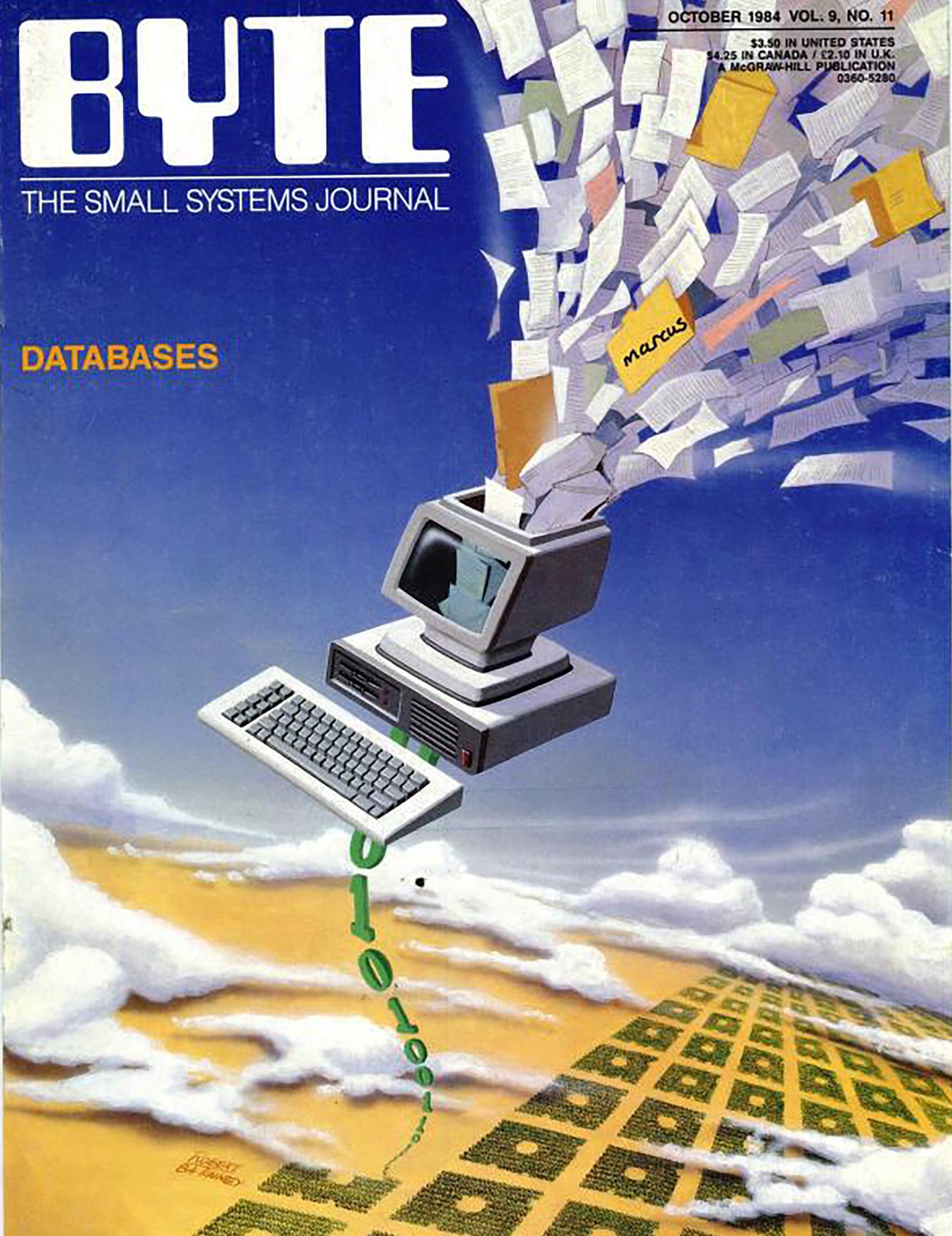



Over the past few years, data centers have become a vital component of the global economy. As businesses increasingly rely on digital technologies to operate, the demand for data centers has soared. Europe has emerged as a key player in this industry, with a growing number of data centers being built across the continent.
As we close Q1 2023, the state of data center investment in Europe remains strong, with significant growth projected over the next few years. The European data center market is expected to grow at a compound annual growth rate of 10% up to 2025, despite wider economic headwinds. This growth is being driven by several factors, including the increasing adoption of cloud computing, the growth of the Internet of Things (IoT), and the increasing demand for artificial intelligence (AI) and machine learning (ML) applications.
Cloud computing has revolutionized the way businesses operate, allowing them to access computing power and storage capacity on demand. This has led to a significant increase in the demand for data center services, as businesses seek to store and process their data in the cloud.
The IoT is a network of connected devices that are able to communicate with each other and with the internet. These devices generate vast amounts of data, which must be processed and analyzed in real-time. Data centers are critical to the functioning of the IoT, as they provide the computing power and storage capacity needed to manage this data.
In addition to cloud computing and the IoT, the increasing demand – especially this year - for AI and ML applications is also not only driving, by forcing the reassessment of data center investment in the continent. AI and ML are being used by businesses across a wide range of
industries, from healthcare to finance to manufacturing. These applications require significant computing power and storage capacity, making data centers an essential component of their infrastructure.
Despite the strong growth in the data center industry, there are several challenges that must be addressed. One of the main challenges is the increasing demand for energy – especially as AI-intensive workloads gain traction amongst millions of users. Data centers are energy-intensive facilities, requiring large amounts of electricity to power their servers and cooling systems. This has led to concerns about the environmental impact of data centers, and efforts are underway to develop more sustainable data center solutions.
Despite all, data center investment in Europe in 2023 is strong, with significant growth projected over the next few years. By addressing challenges and continuing to innovate, the data center industry will be well-positioned for continued growth and success in the years to come.
João Marques Lima is a London-based journalist, editor and host. Winner of an IM100 Digital Infrastructure Award and a Professional Publishers Association (PPA) 30 Under 30 Media Award, he owns a real passion for the media and has experience across online, print, broadcast and events. He is the founder and editor of The Tech Capital, part of Mondego Media Group, and the host for the Great Business Minds Podcast, which combined form the definitive digital media and event platforms for the business of digital infrastructure. João is part of a new generation of “mediatrepreneurs” and throughout his career he has reported from over 35 countries worldwide, filming interviews with CEOs of big tech companies and government figures, amongst others..
Helsinki
Madrid
Dusseldorf
Istanbul
Tier 3 markets of interests Emerging Tier 2 markets Tier 1 markets (FLAPD) Copenhagen Lissabon
Athens
FEBRUARY 26 & 27
AMSTERDAM RAI


For more info visit: www.kickstartconf.eu
